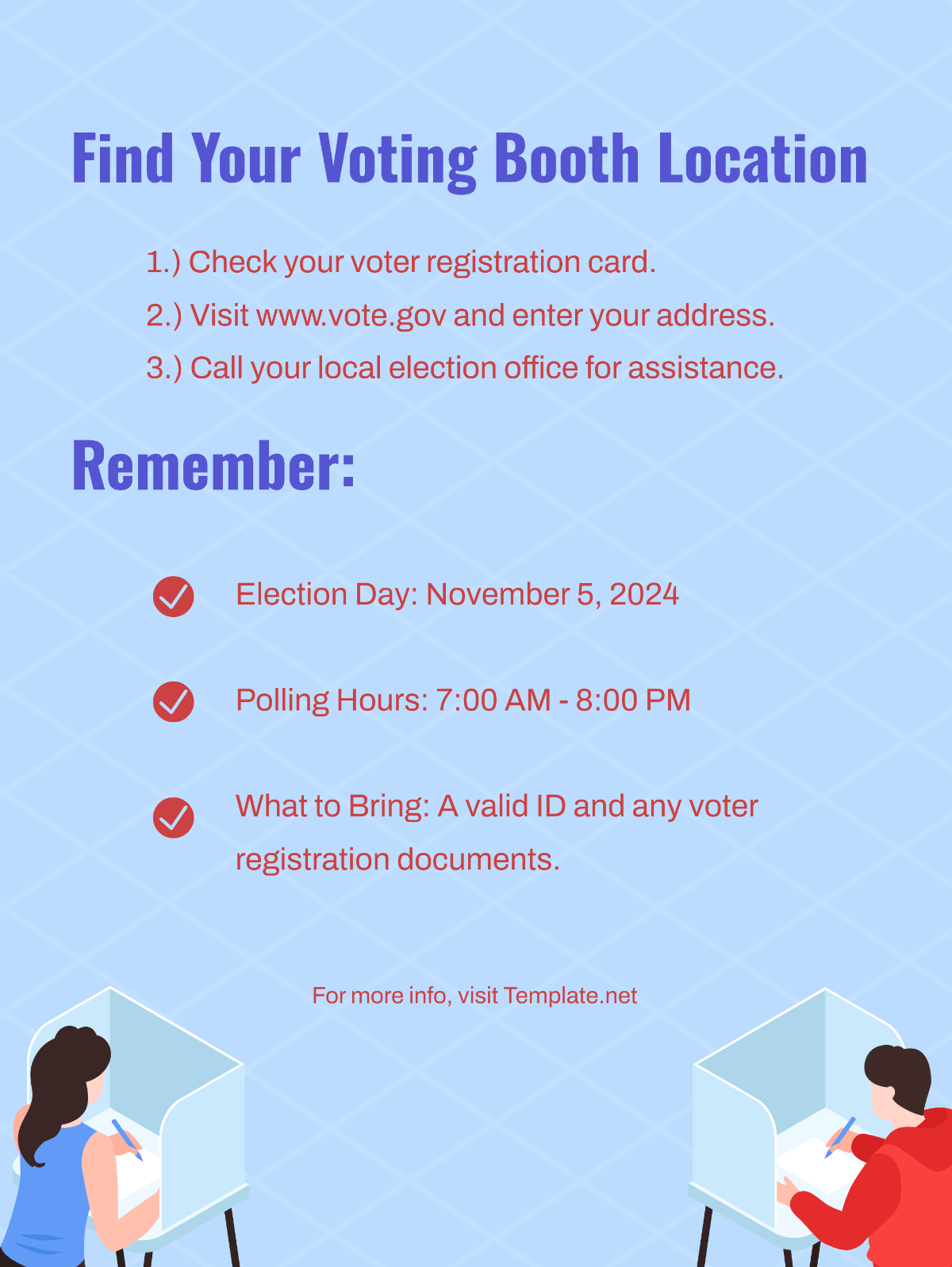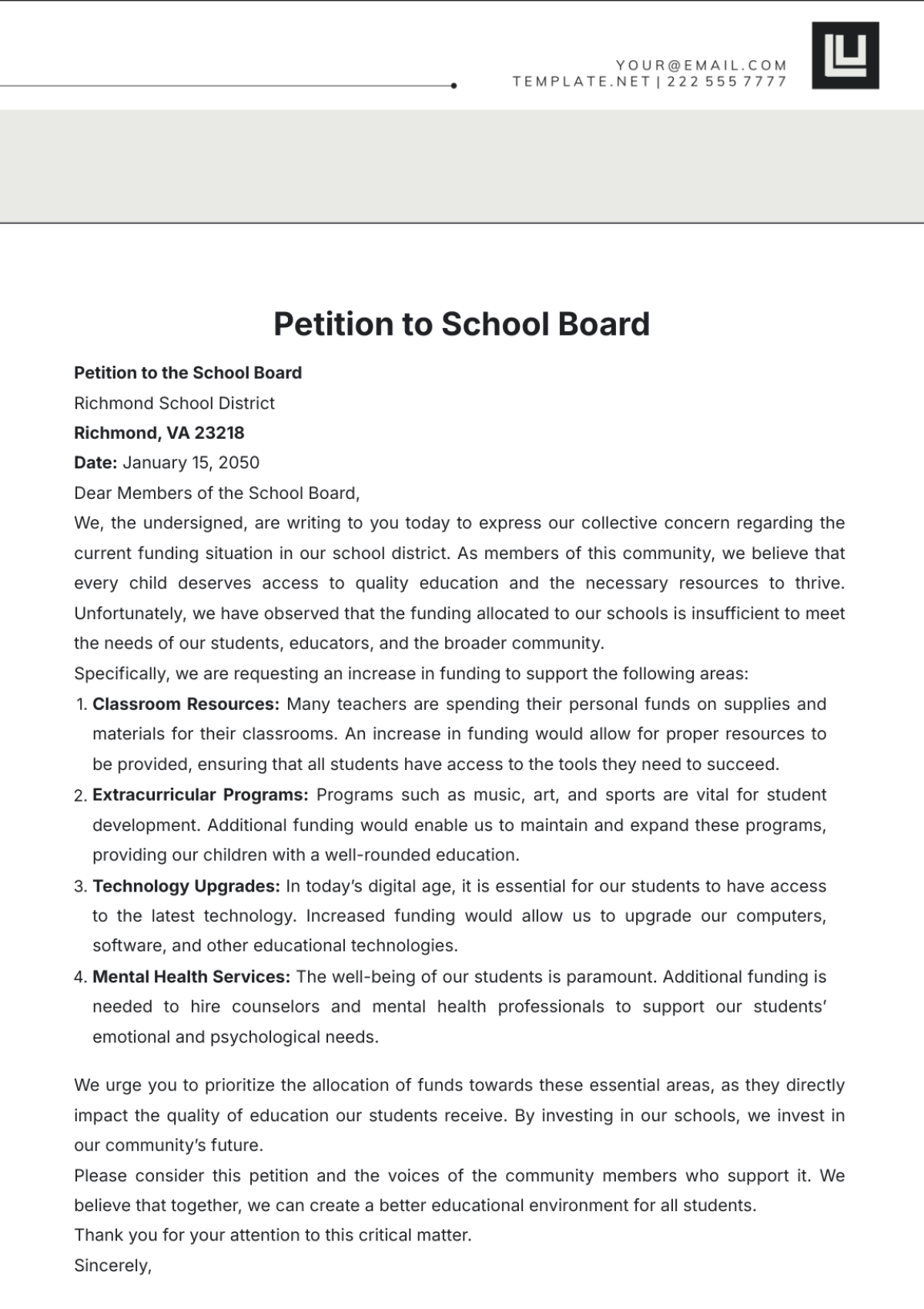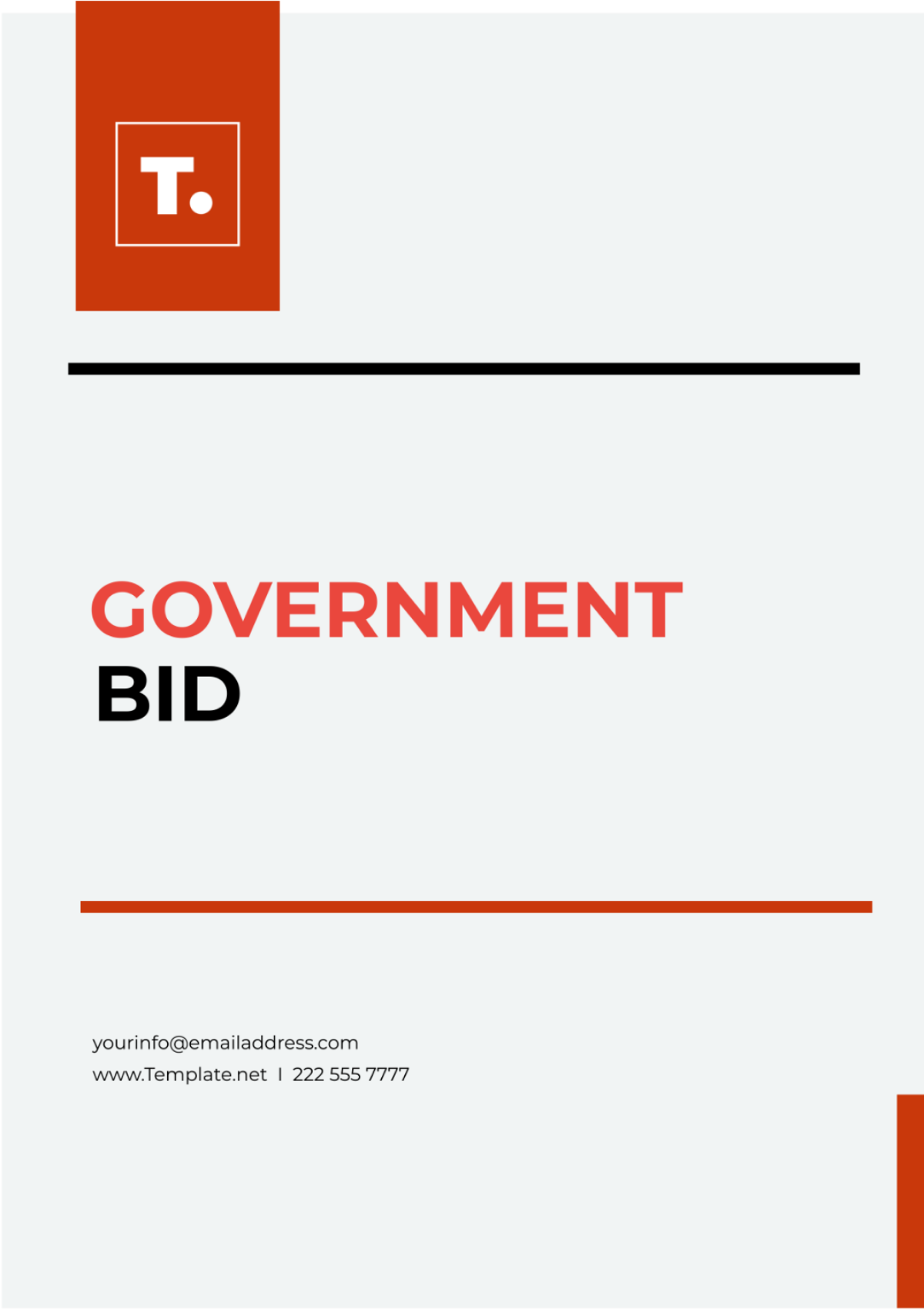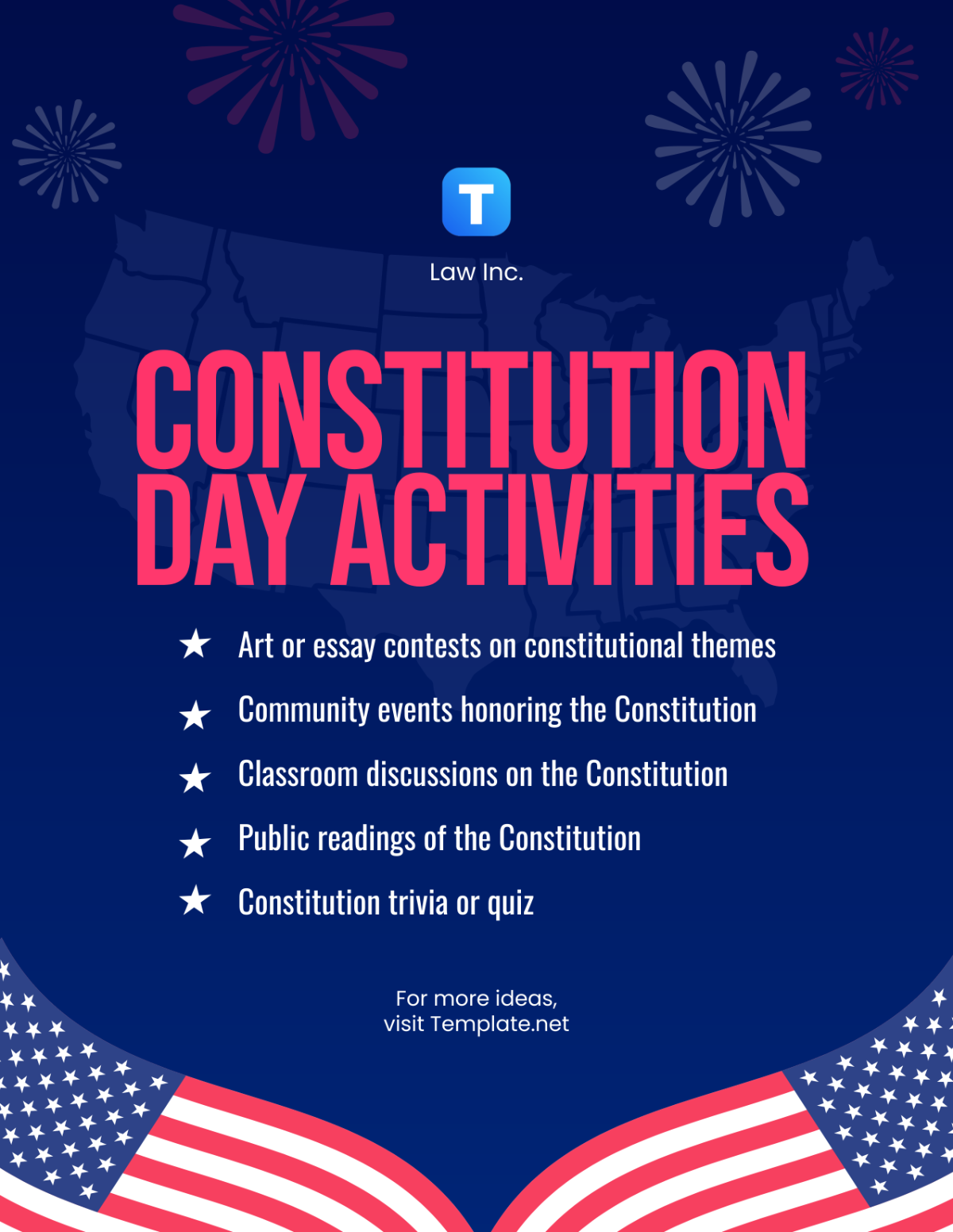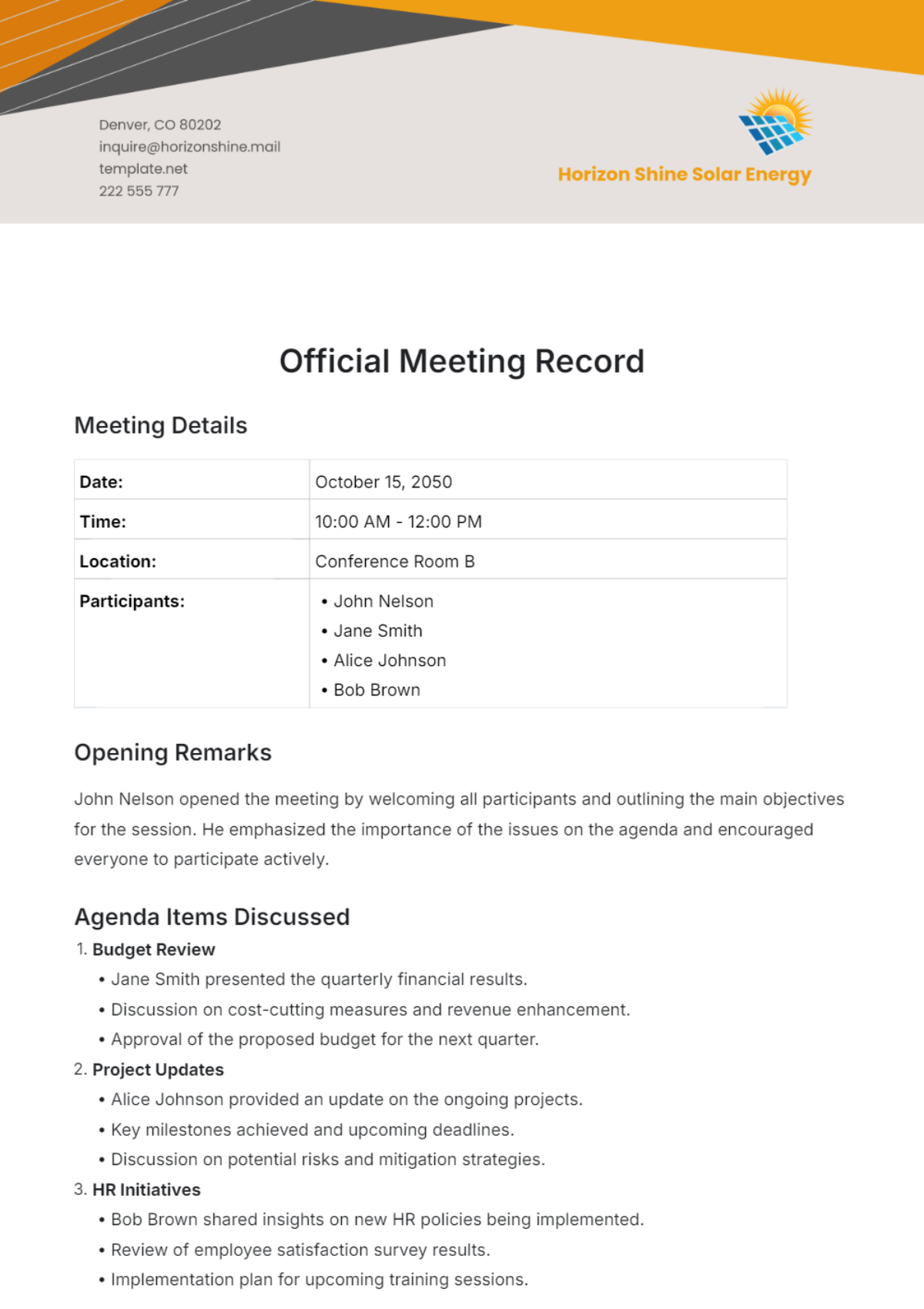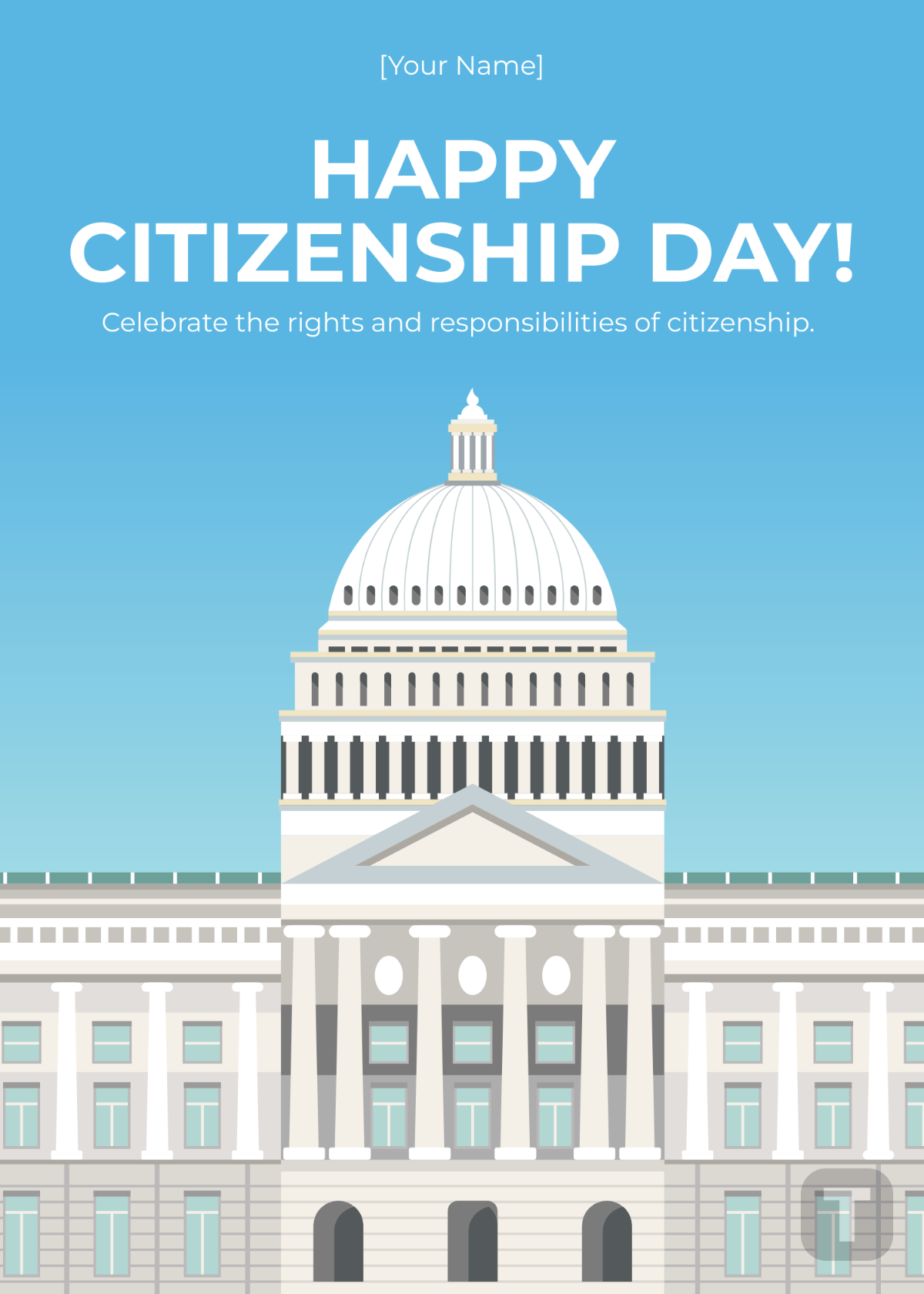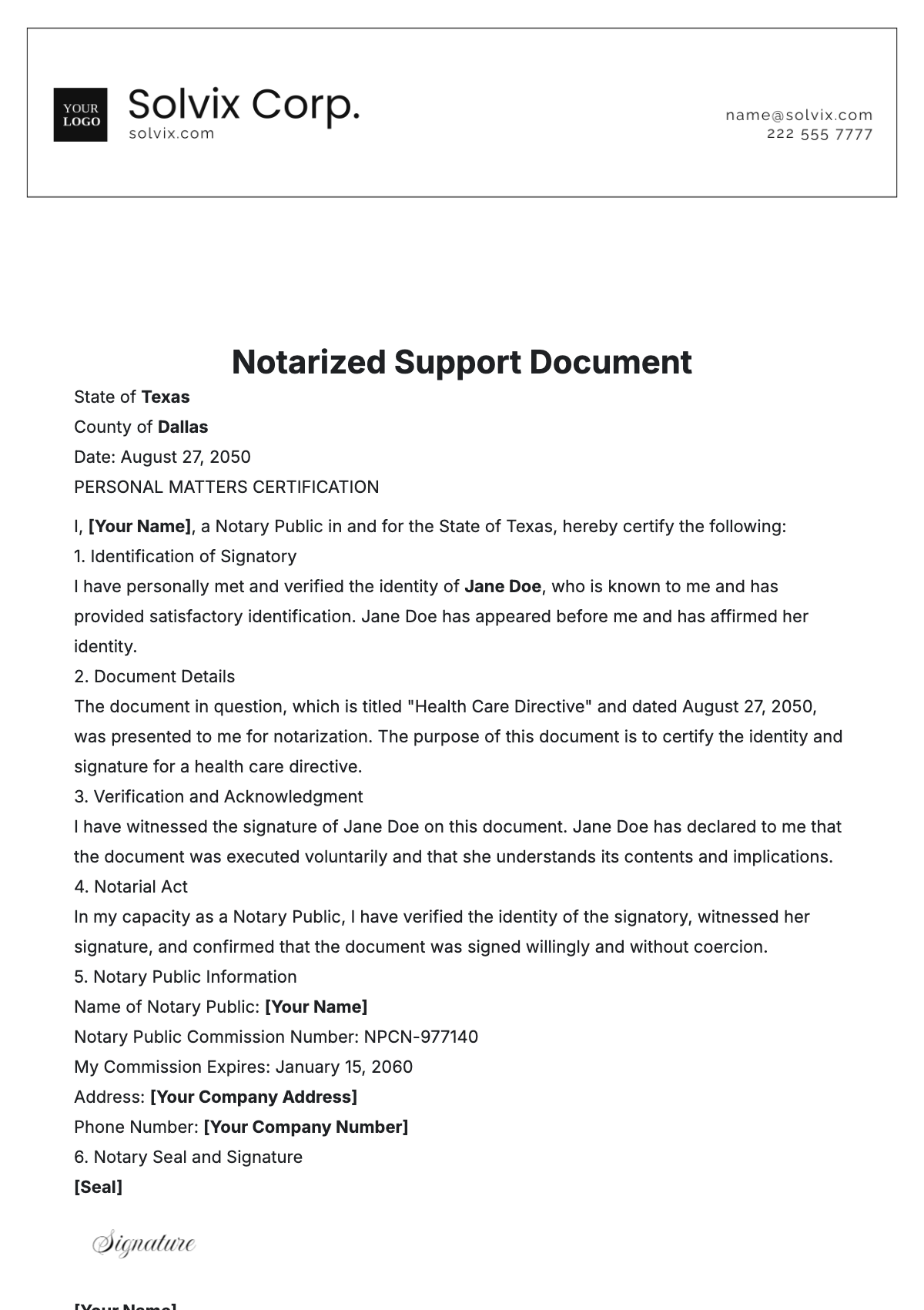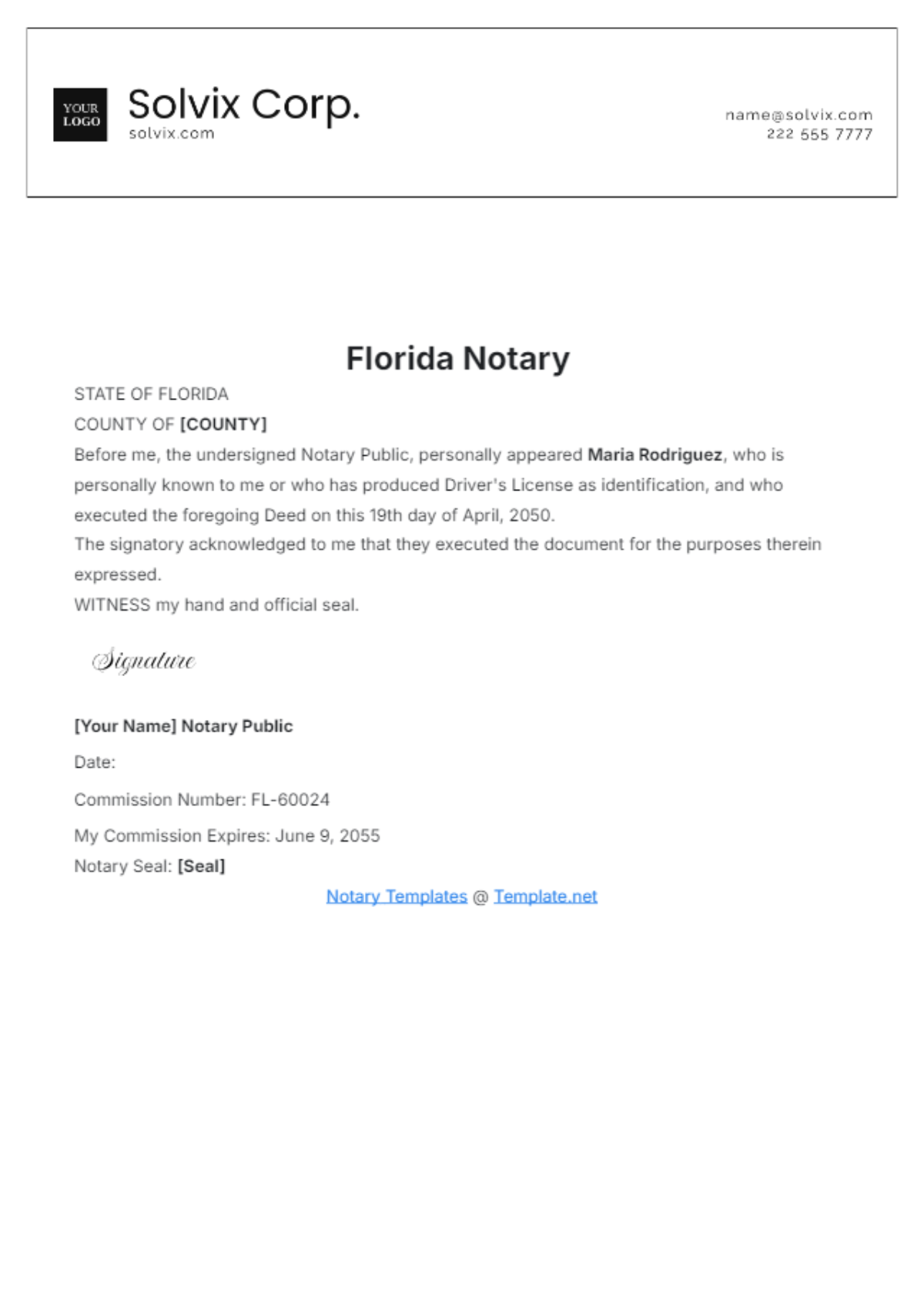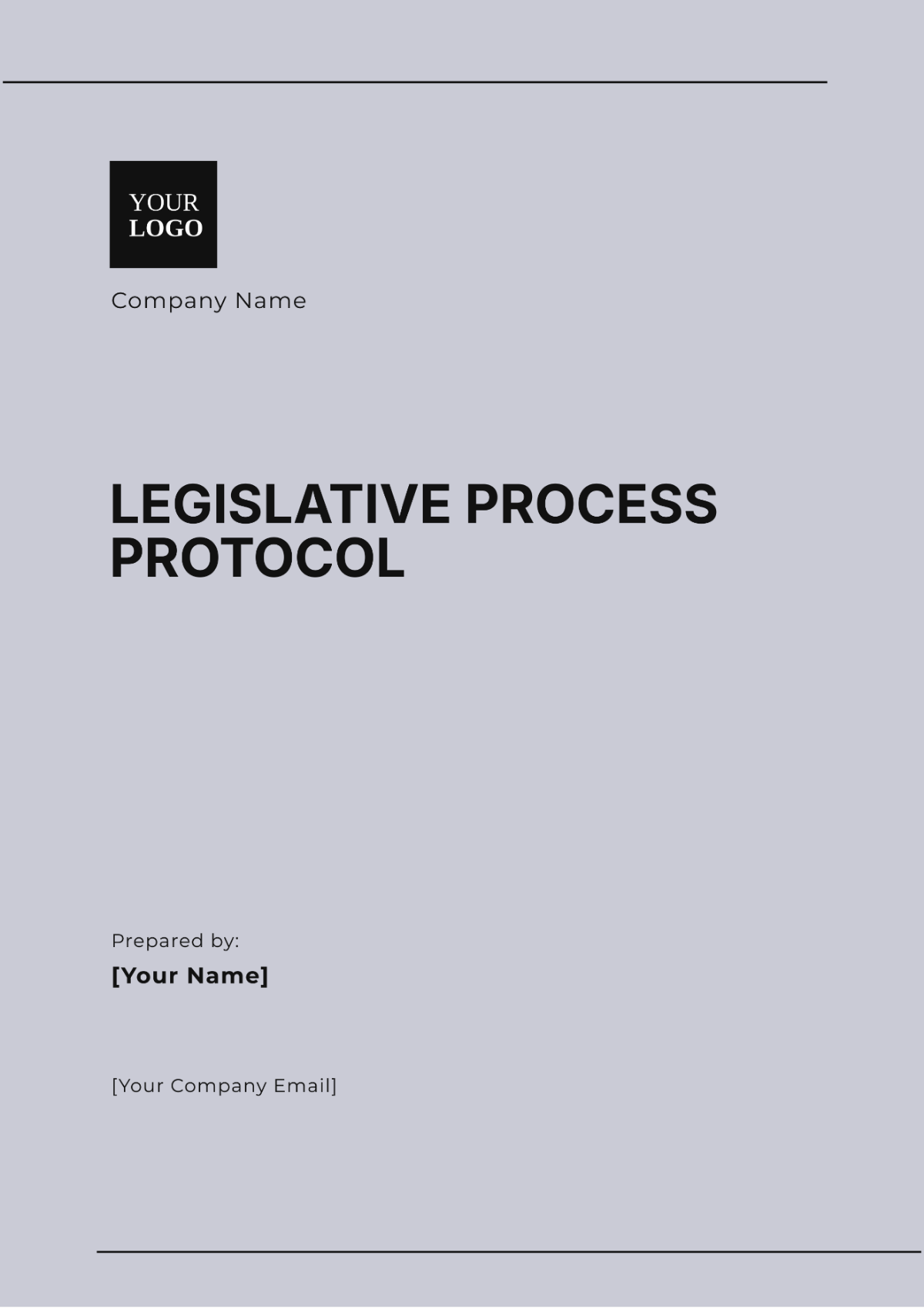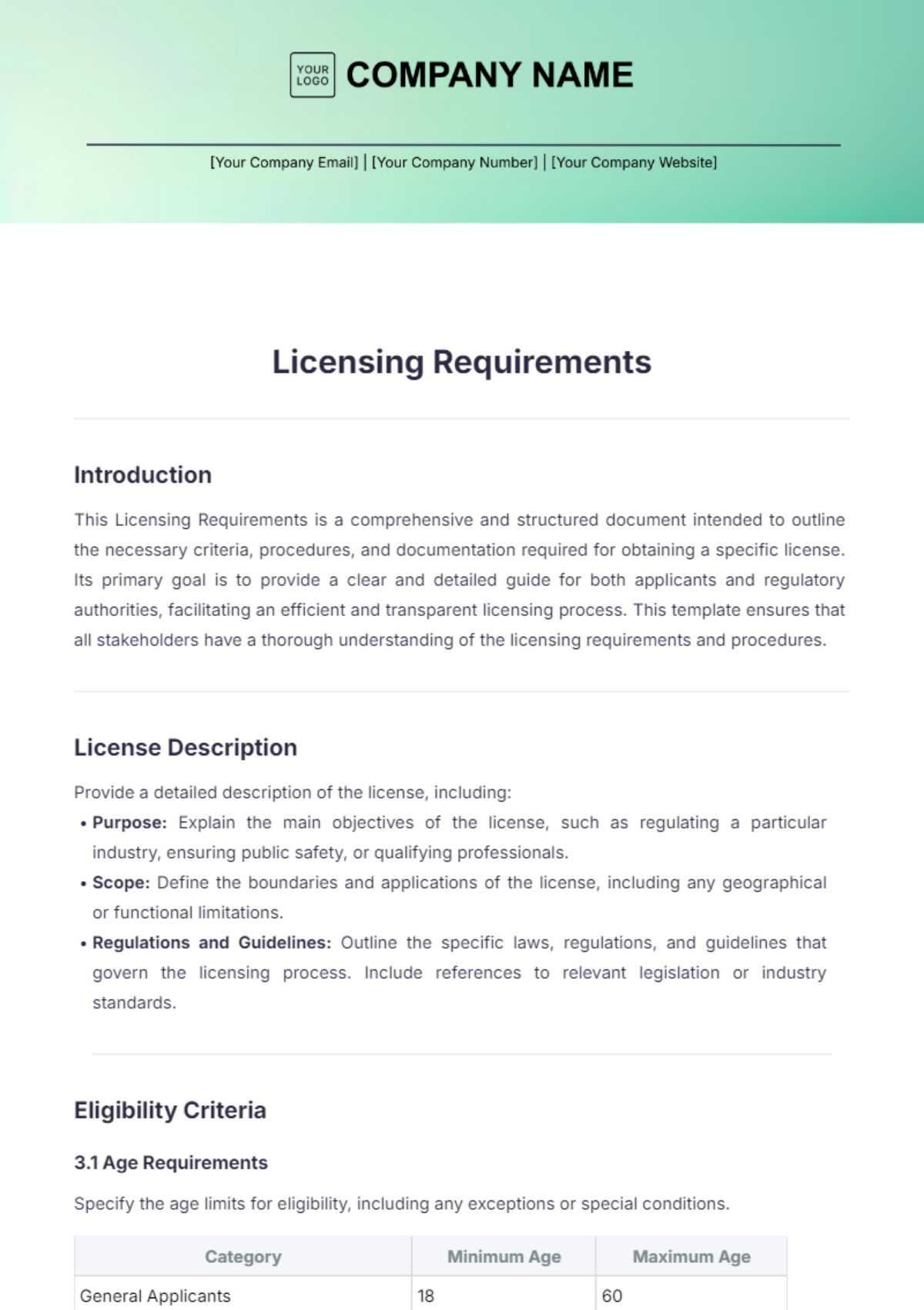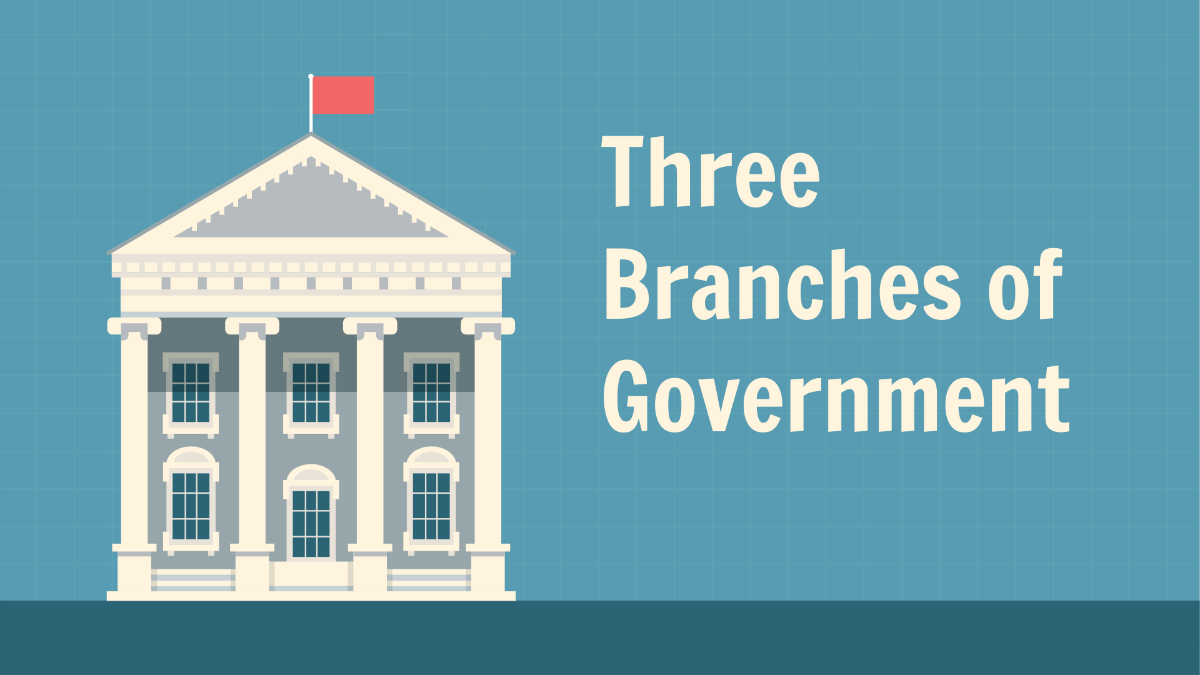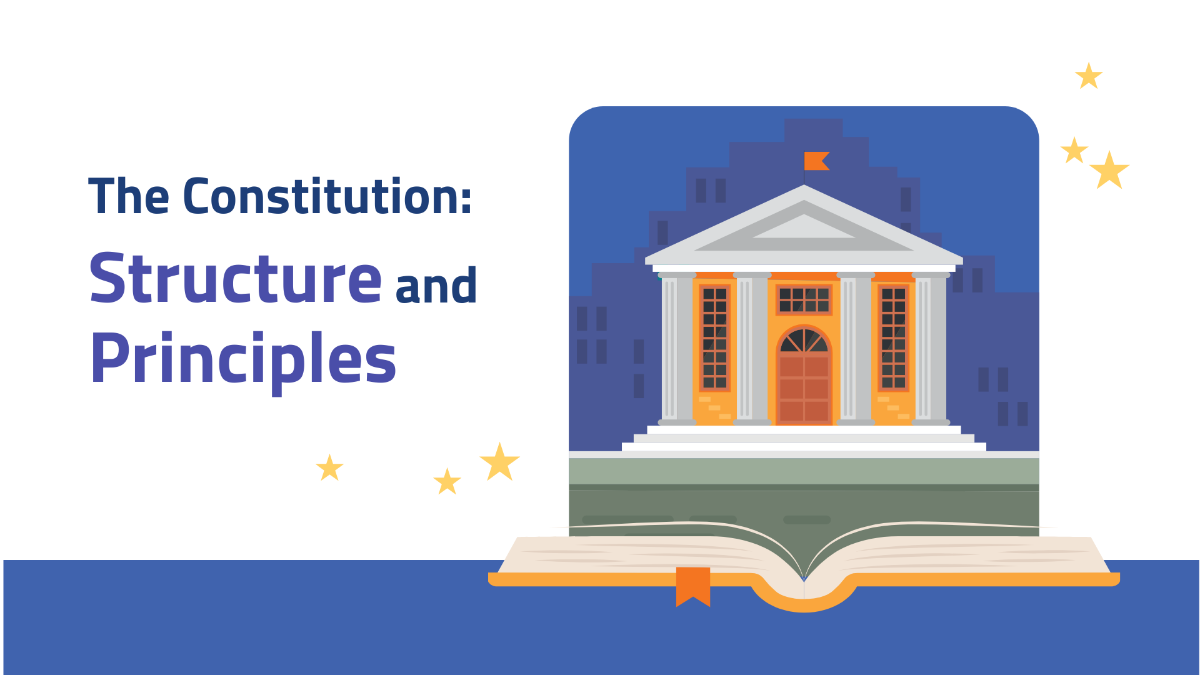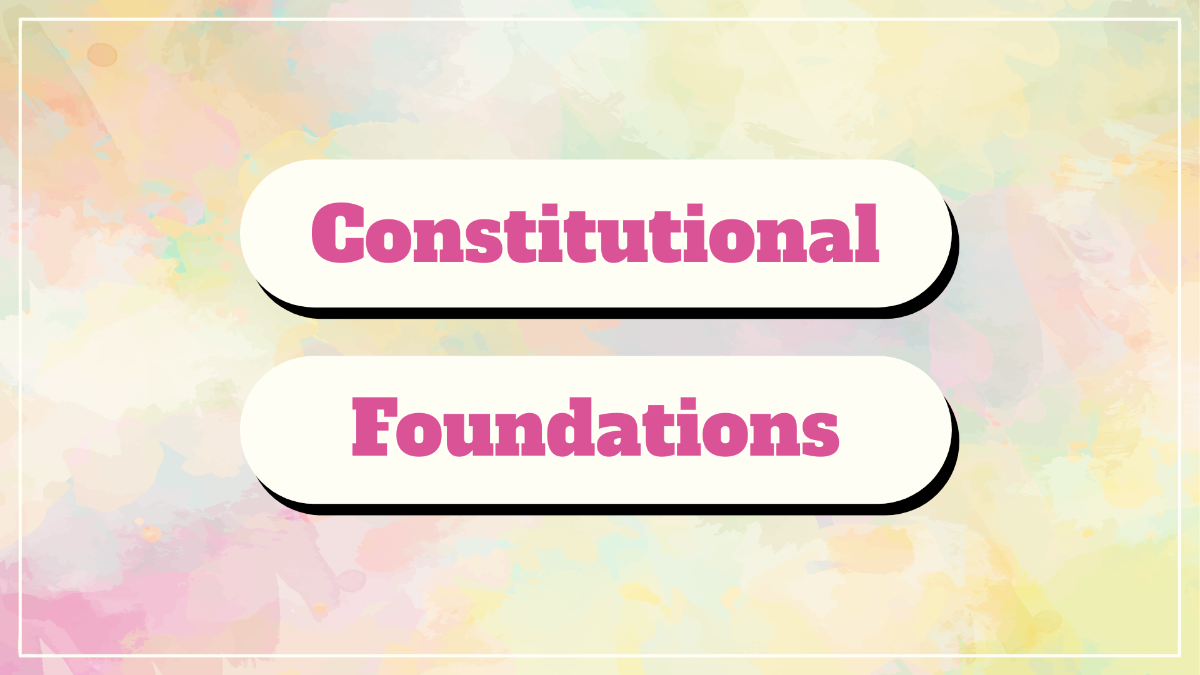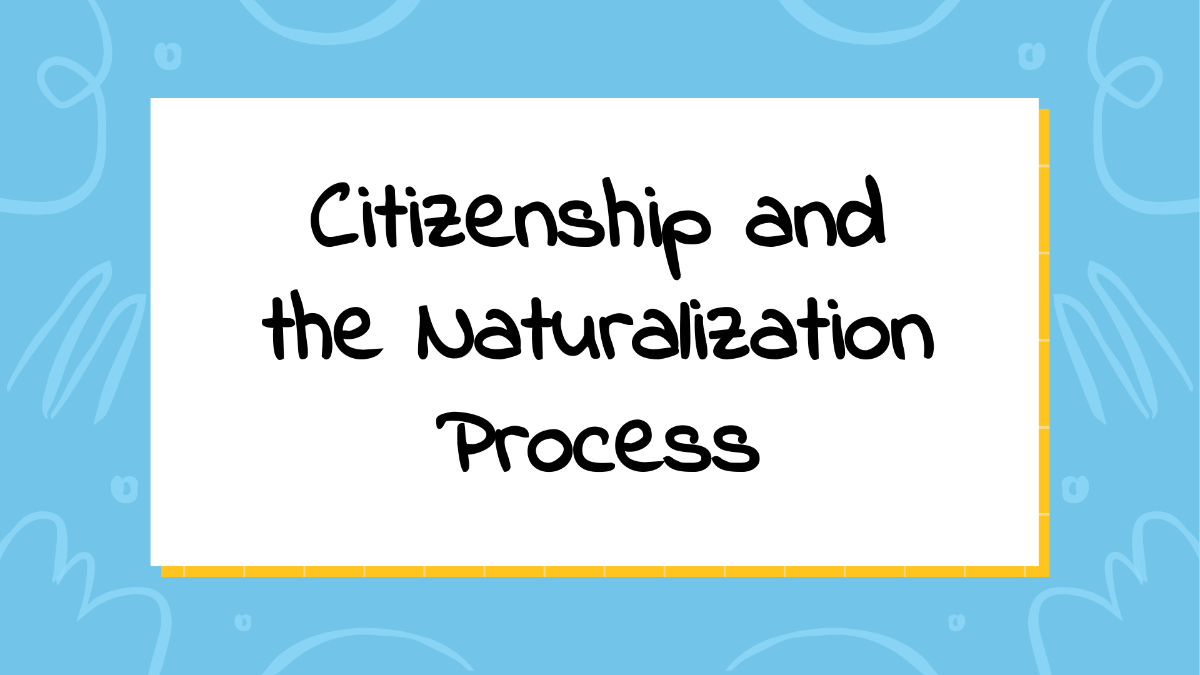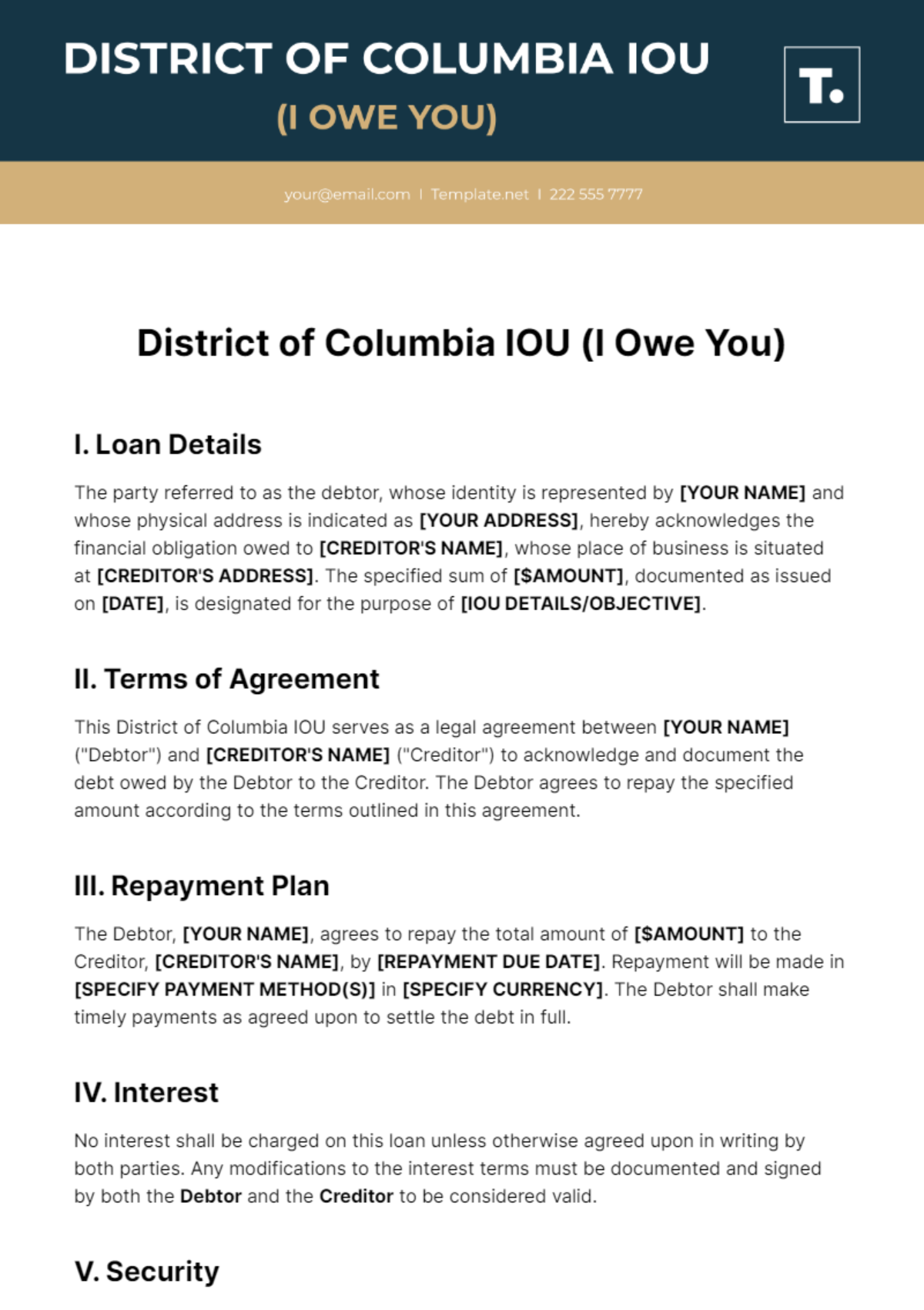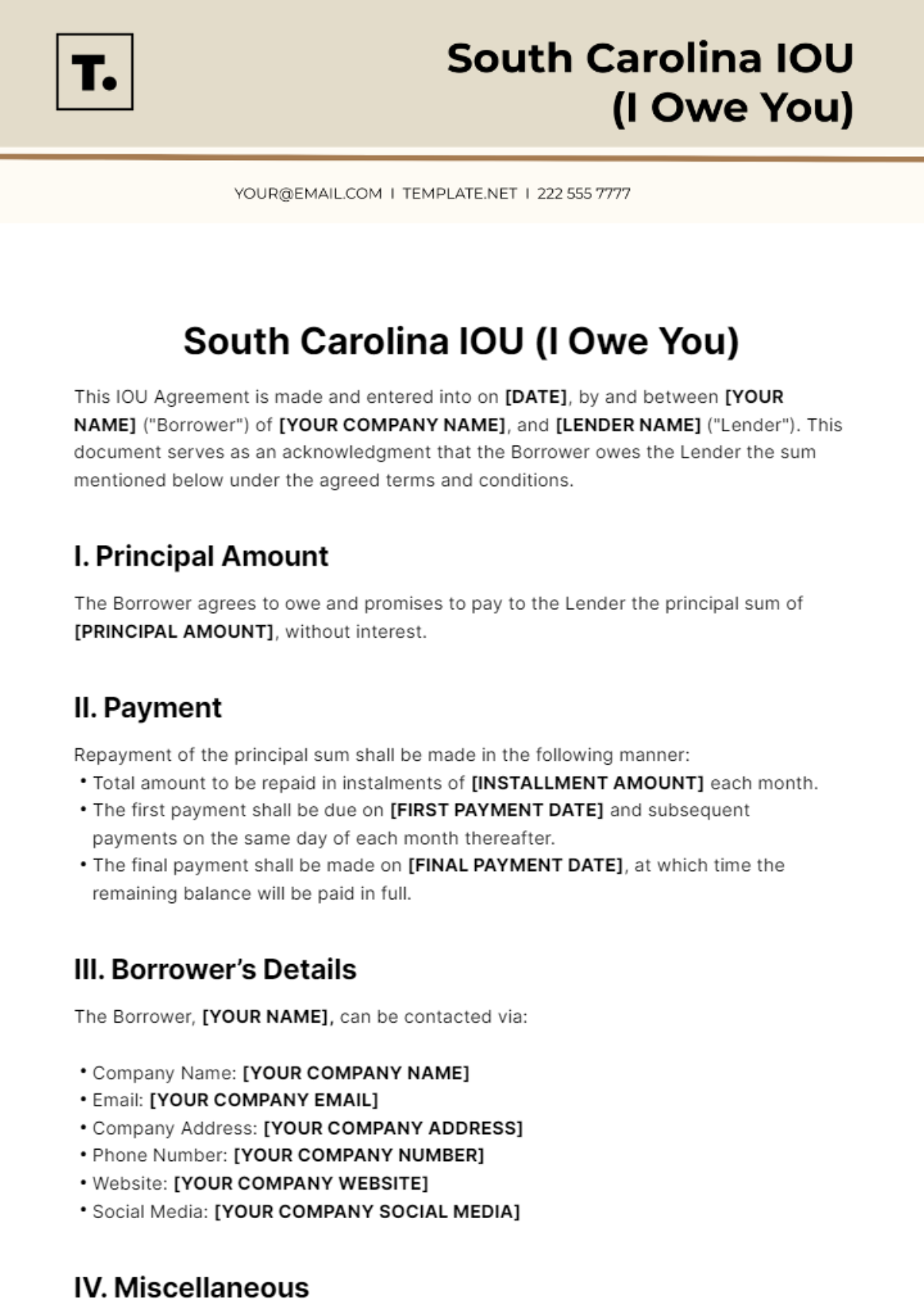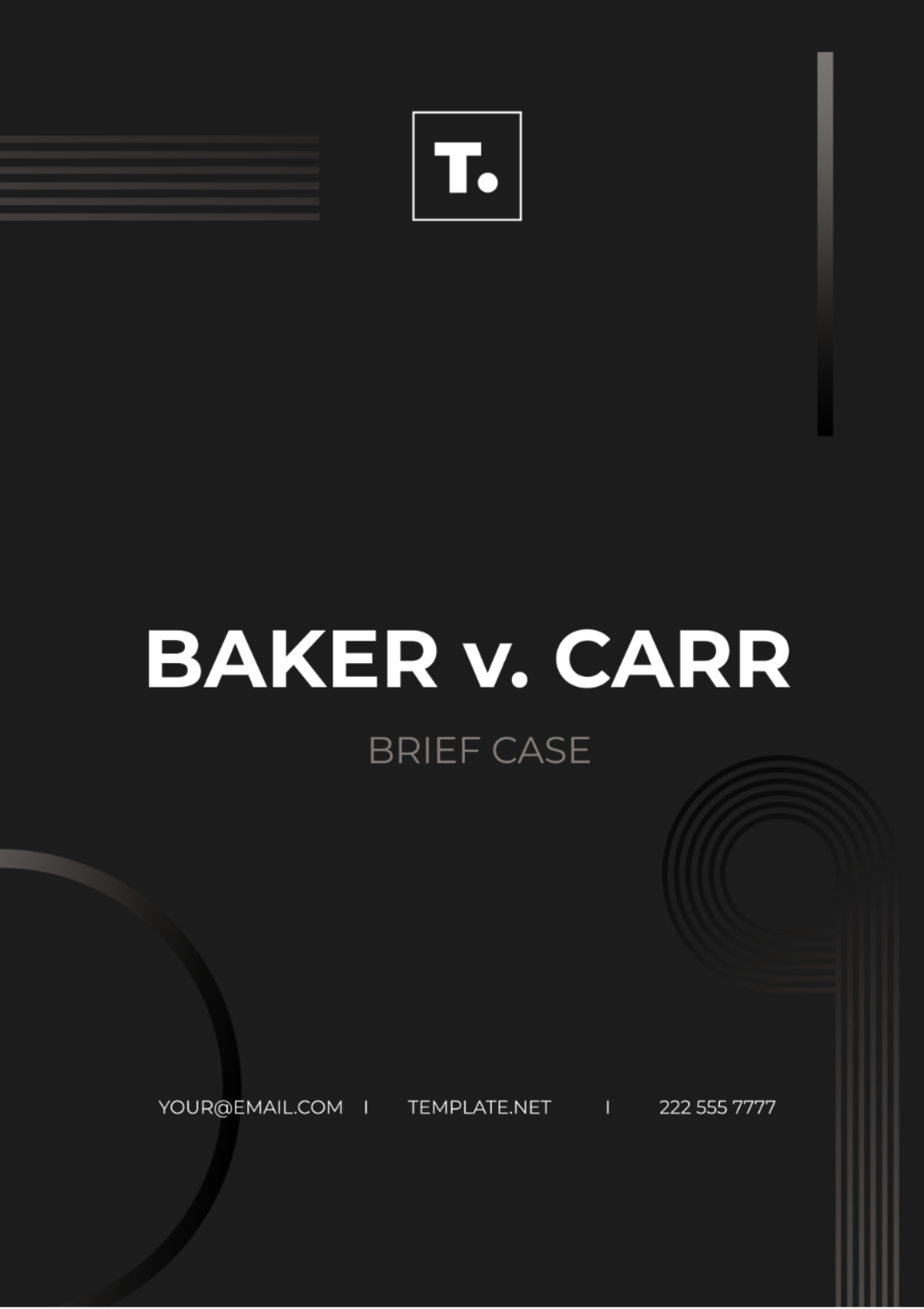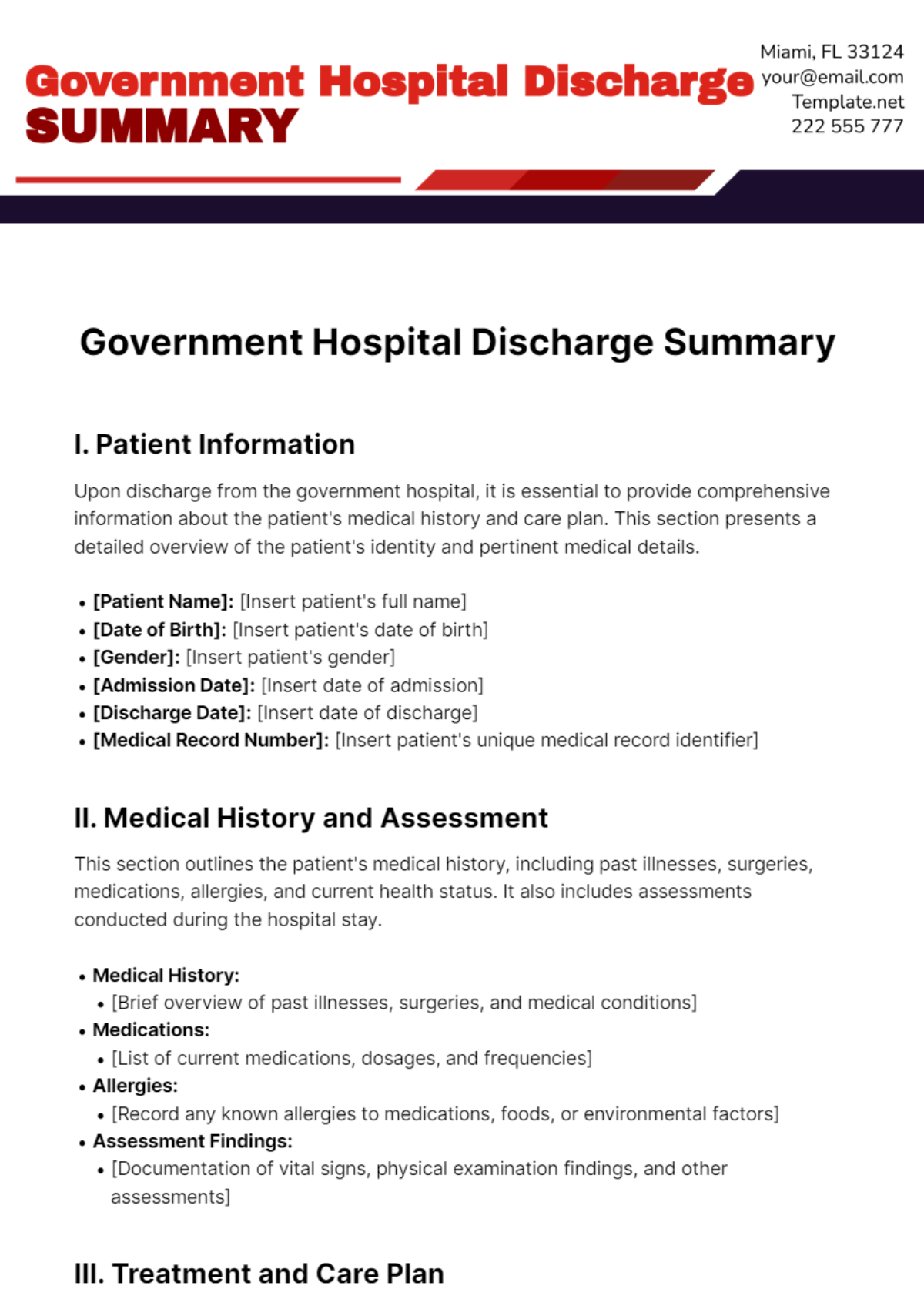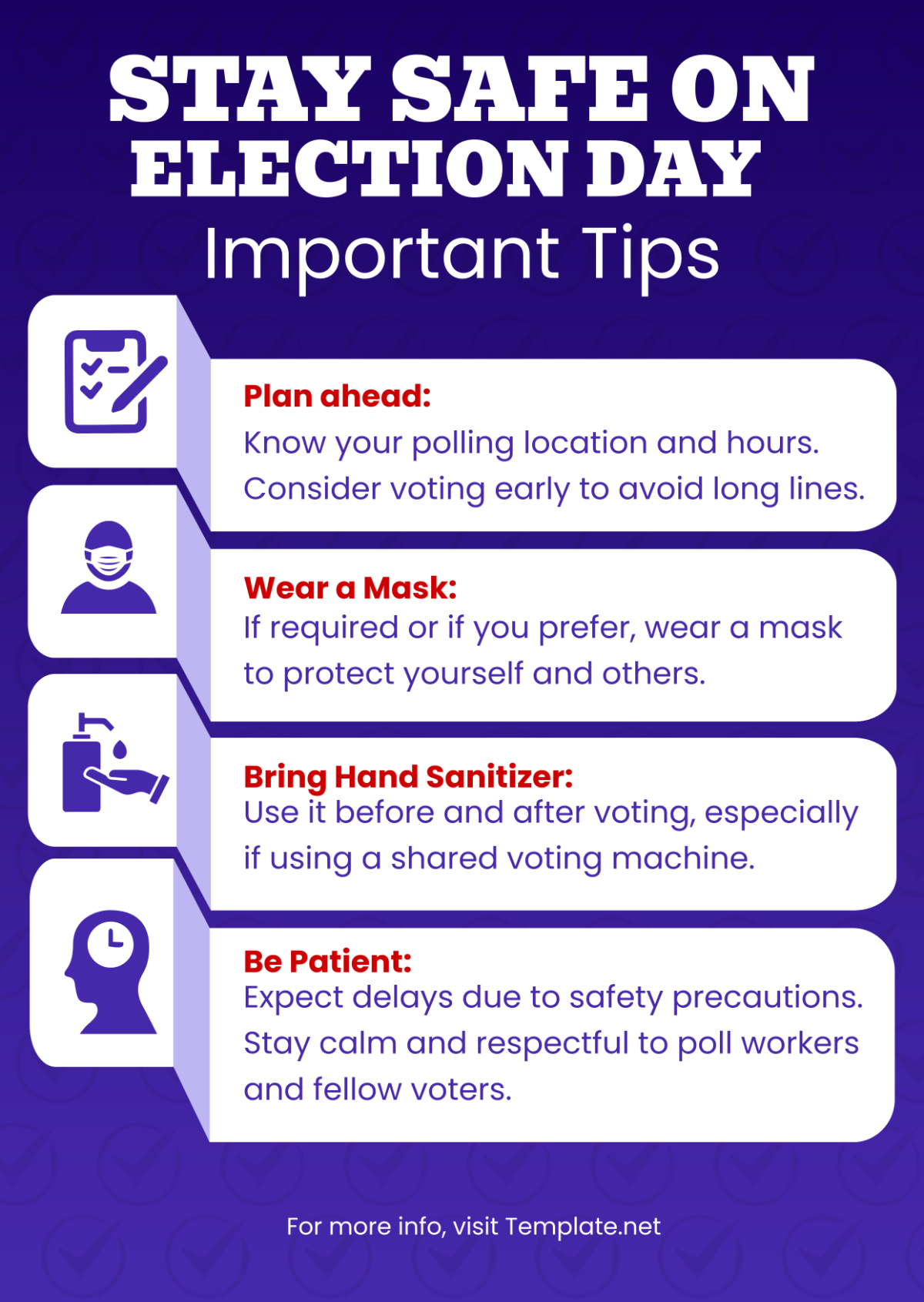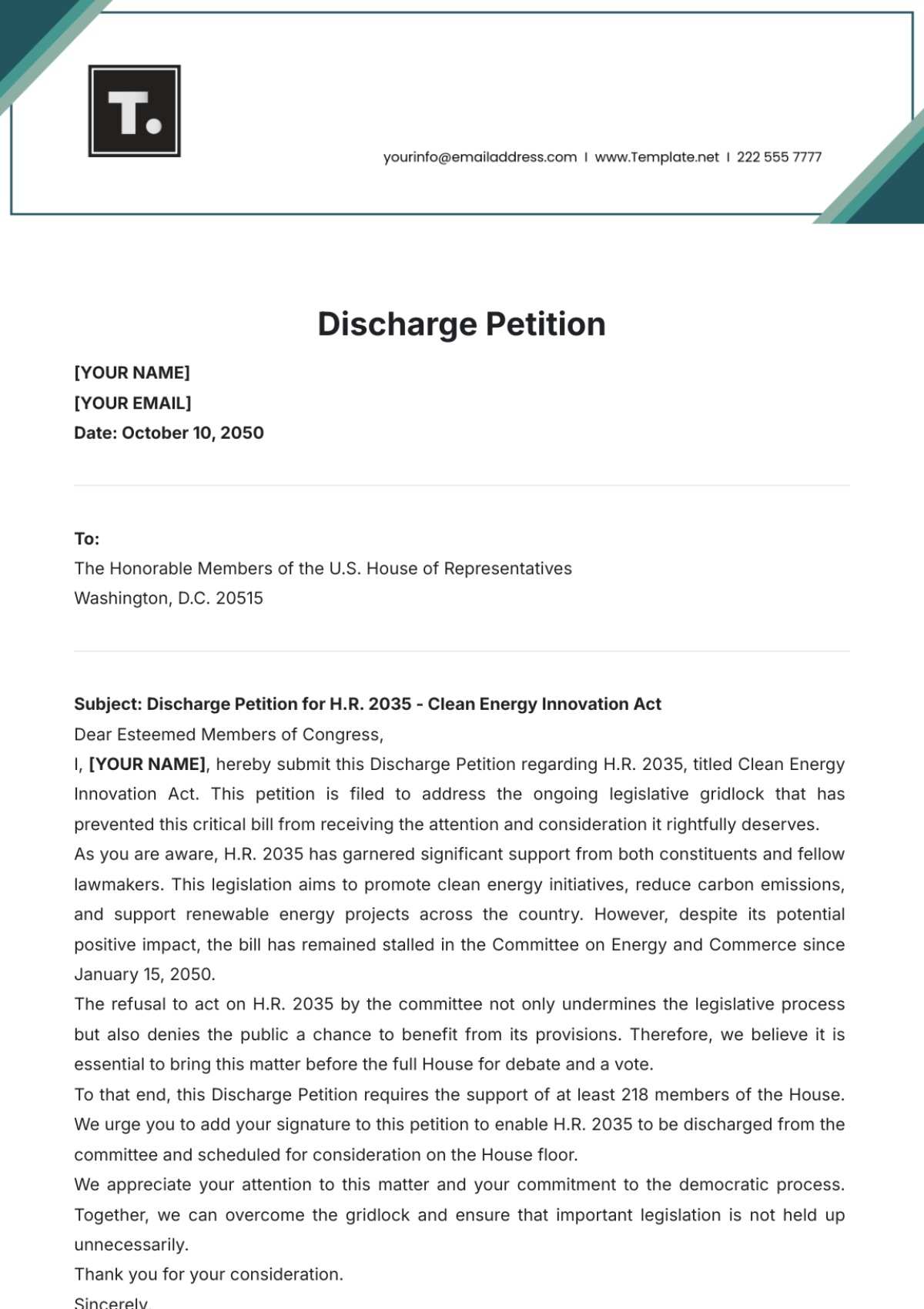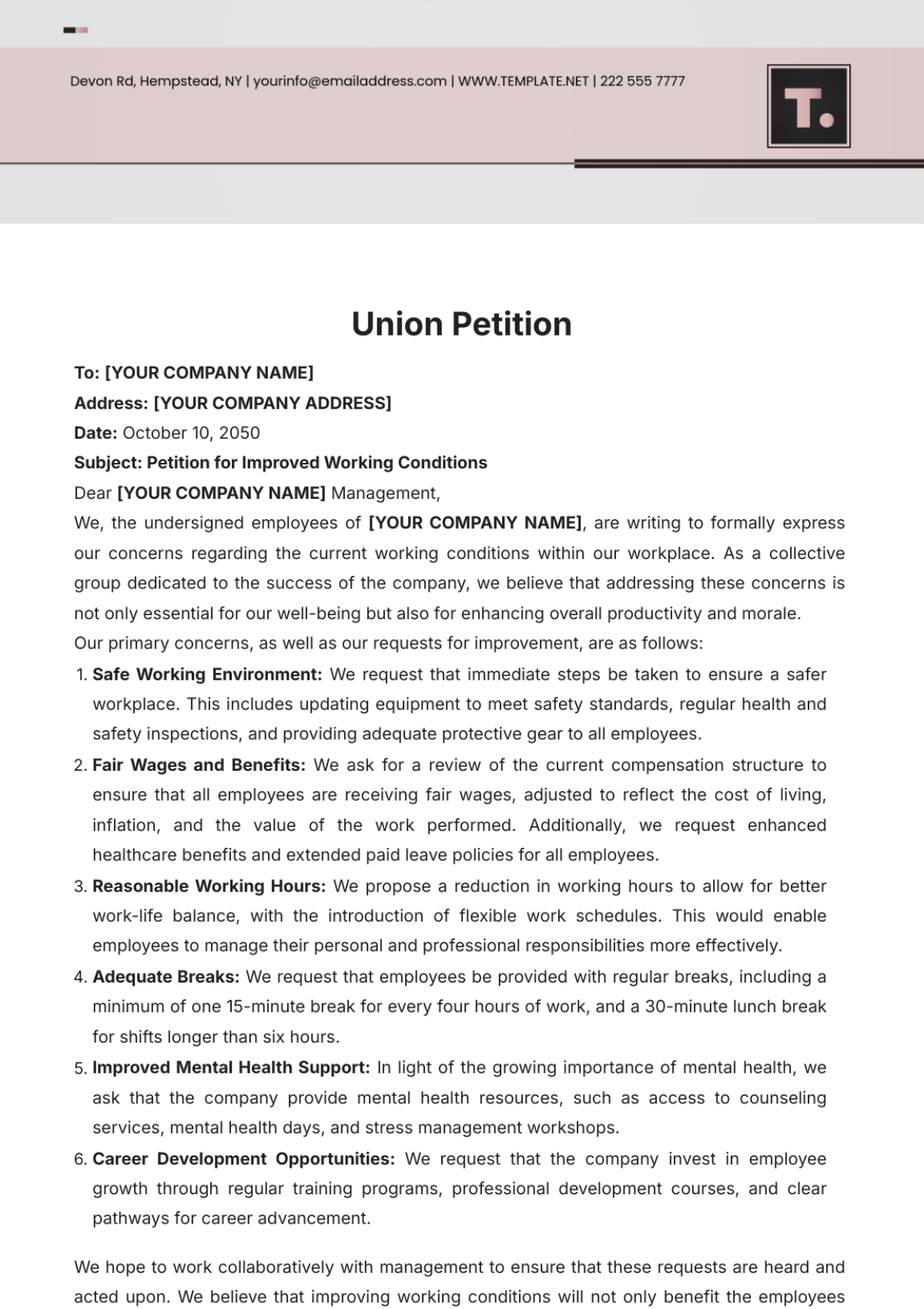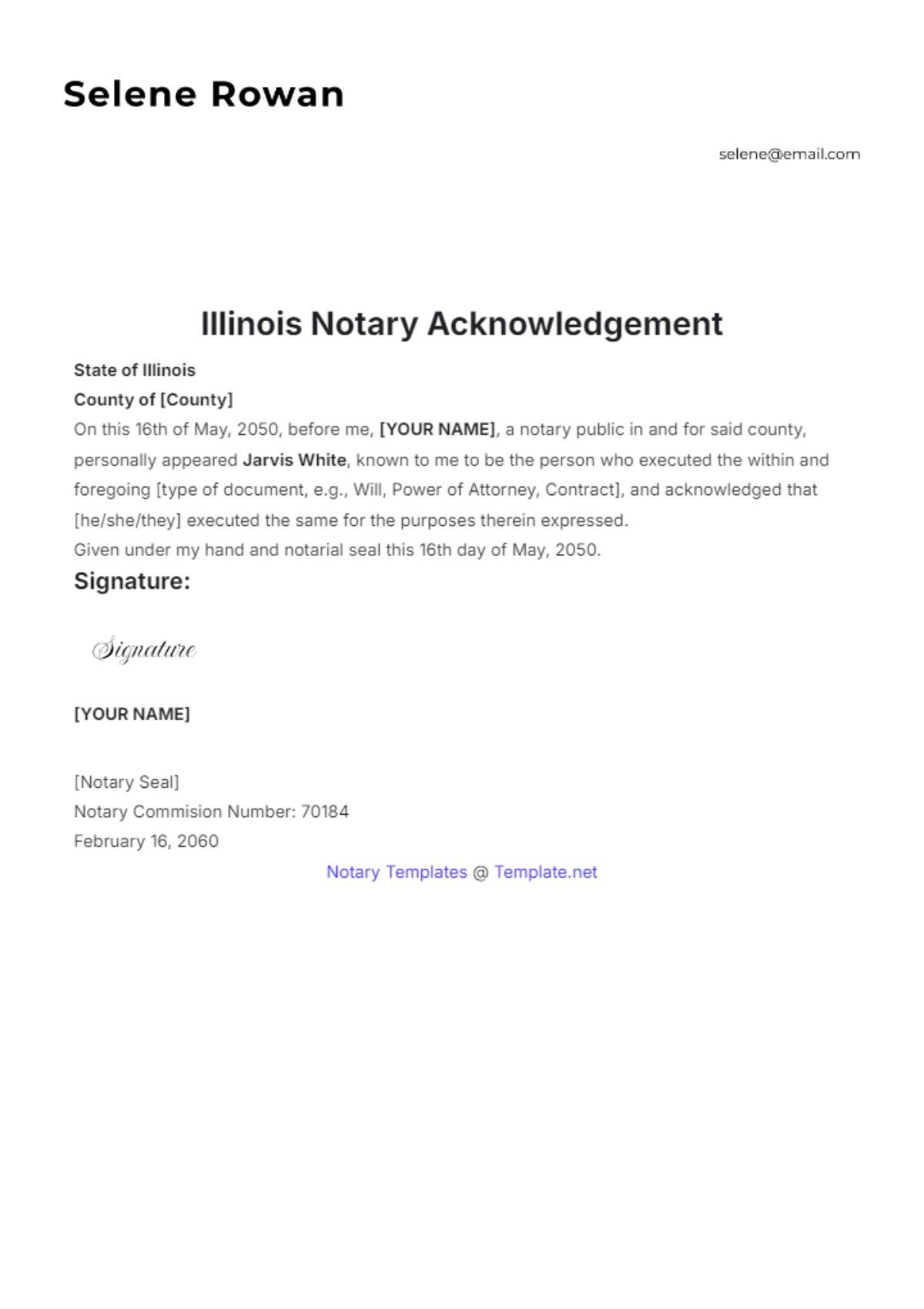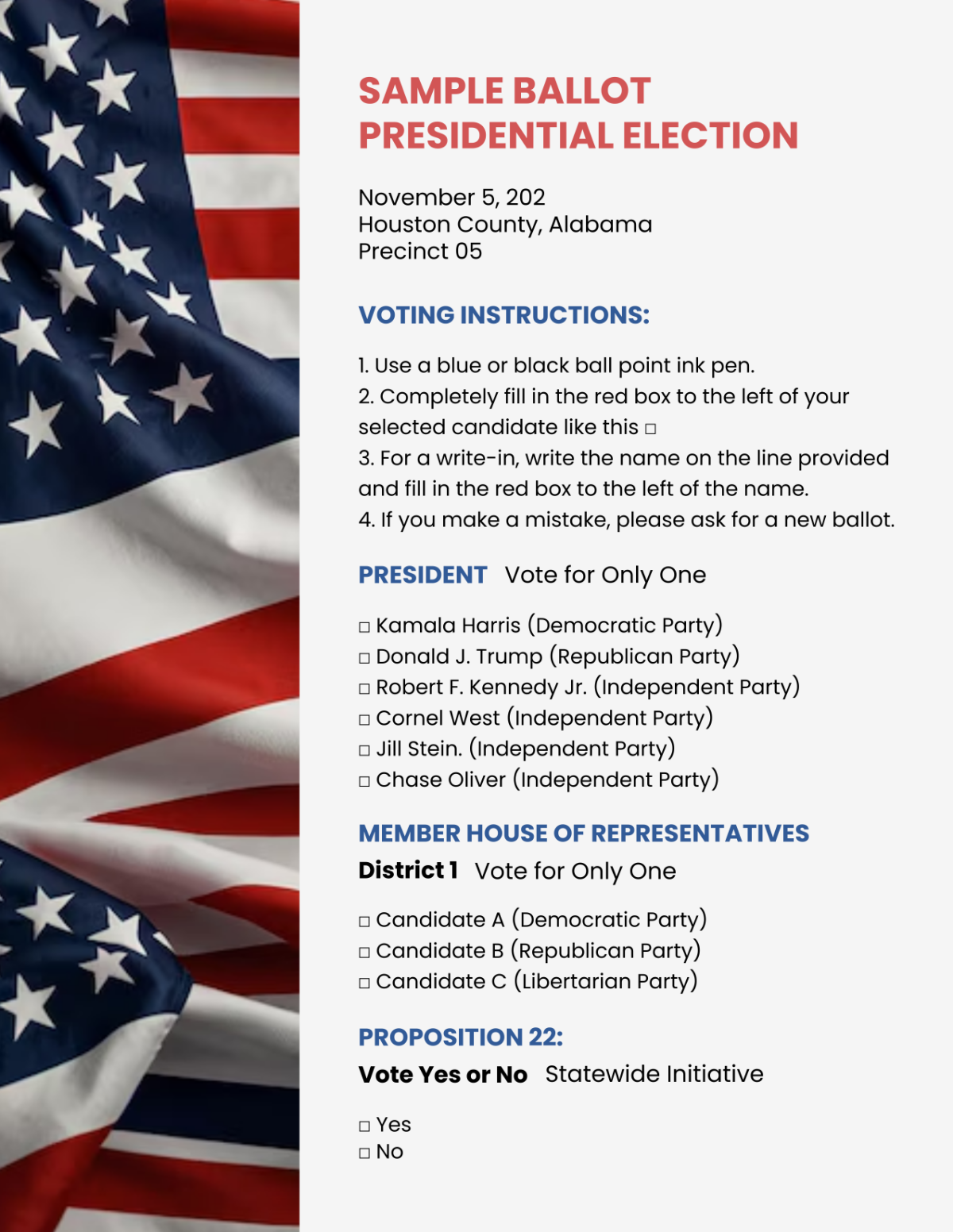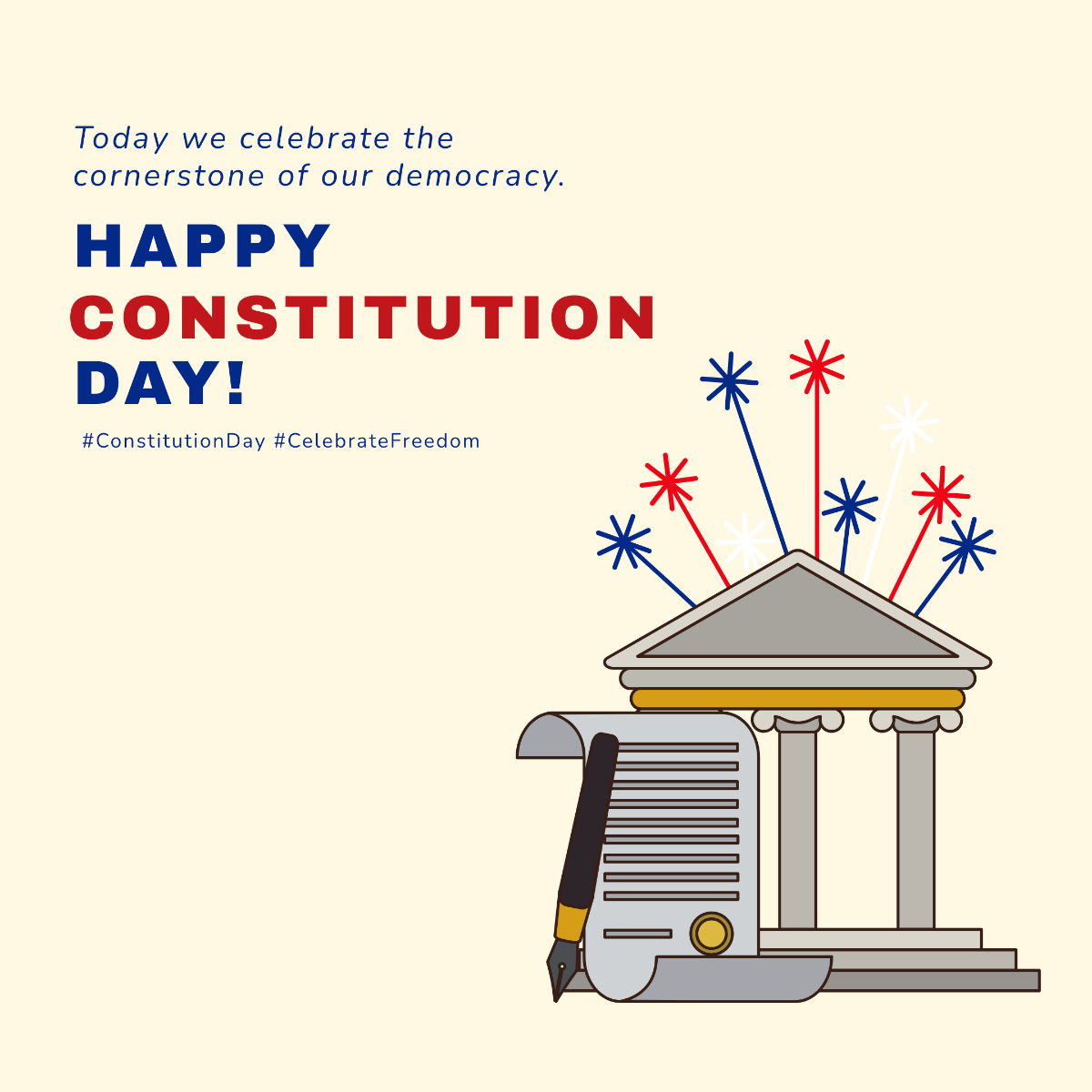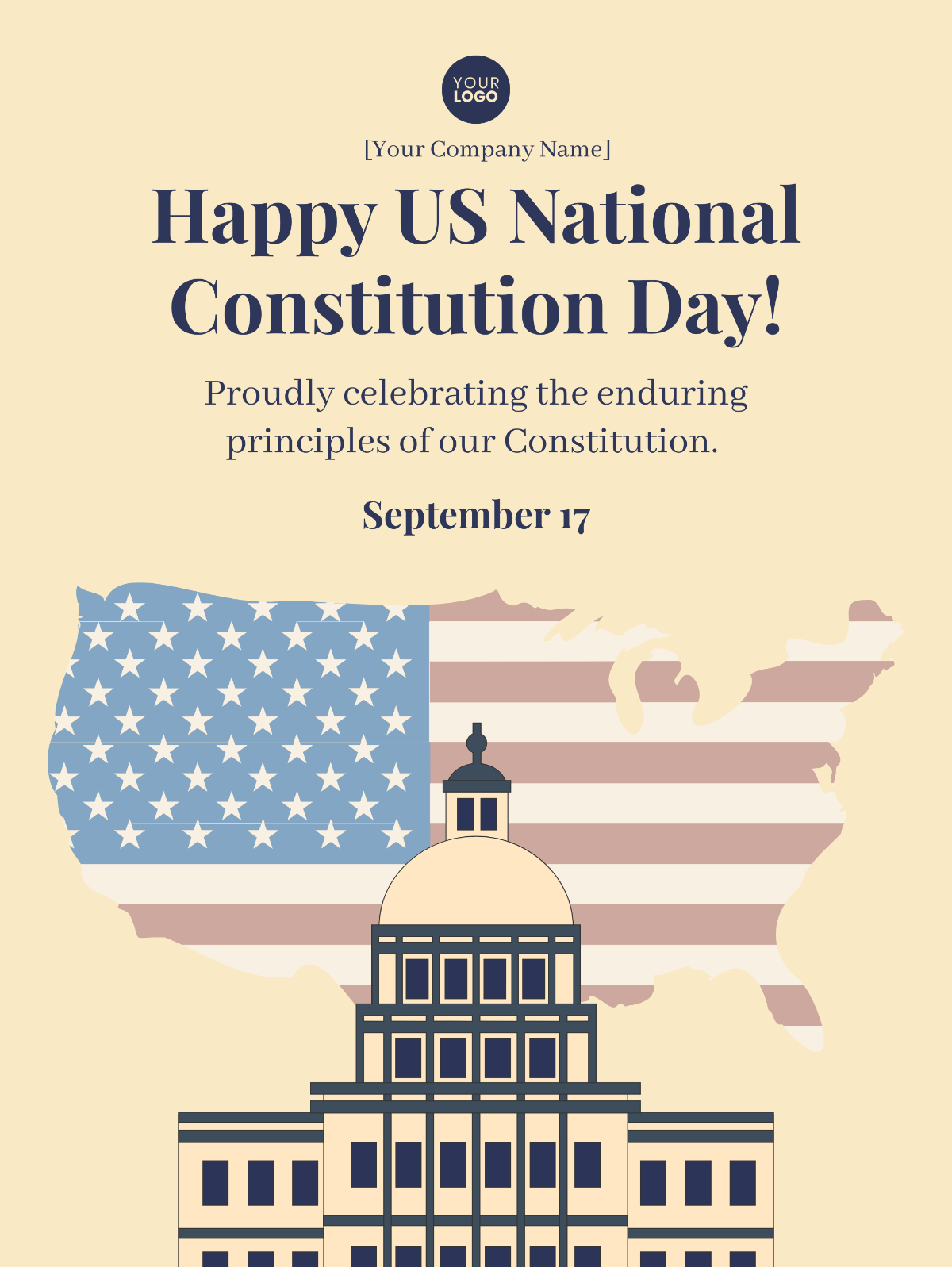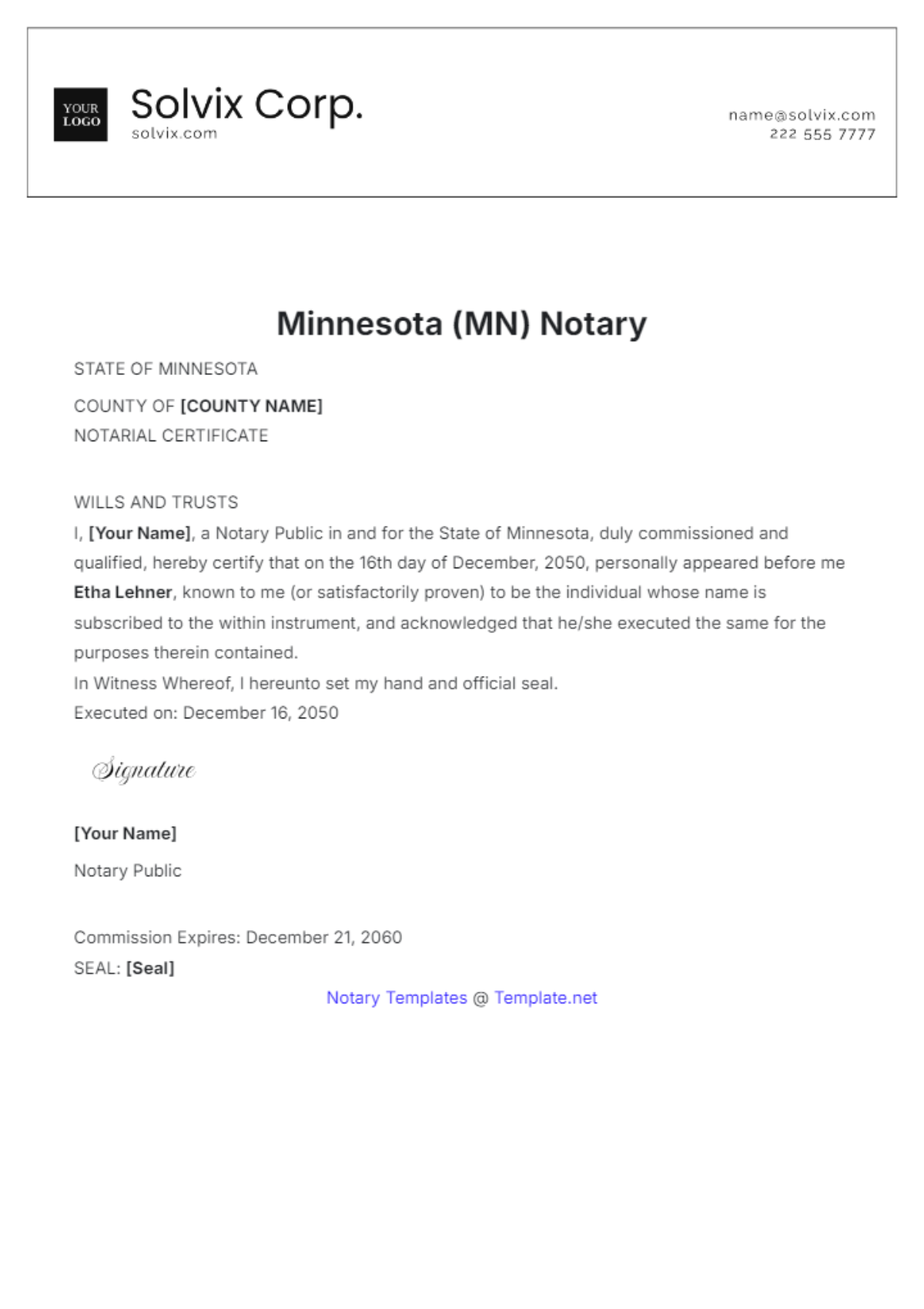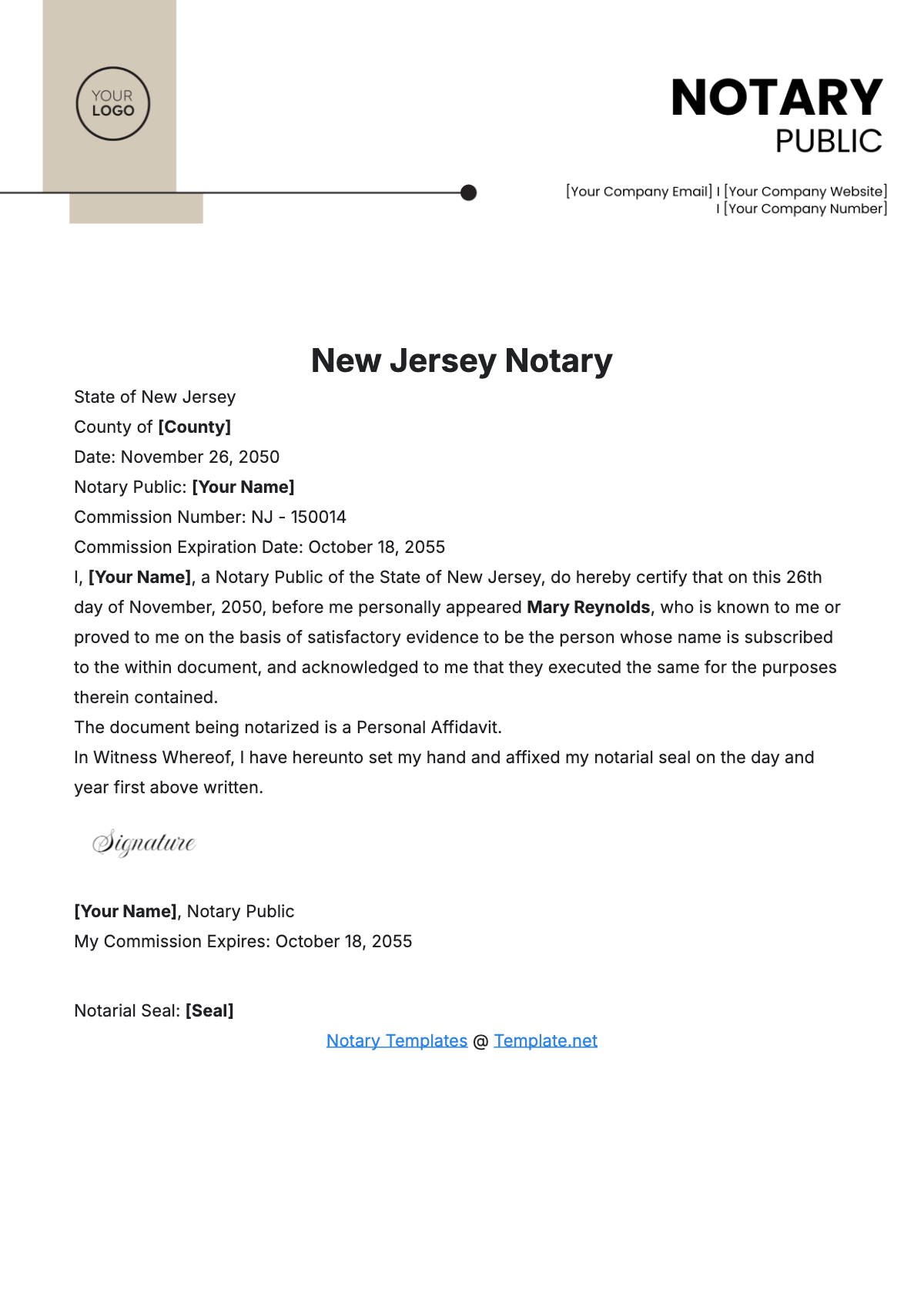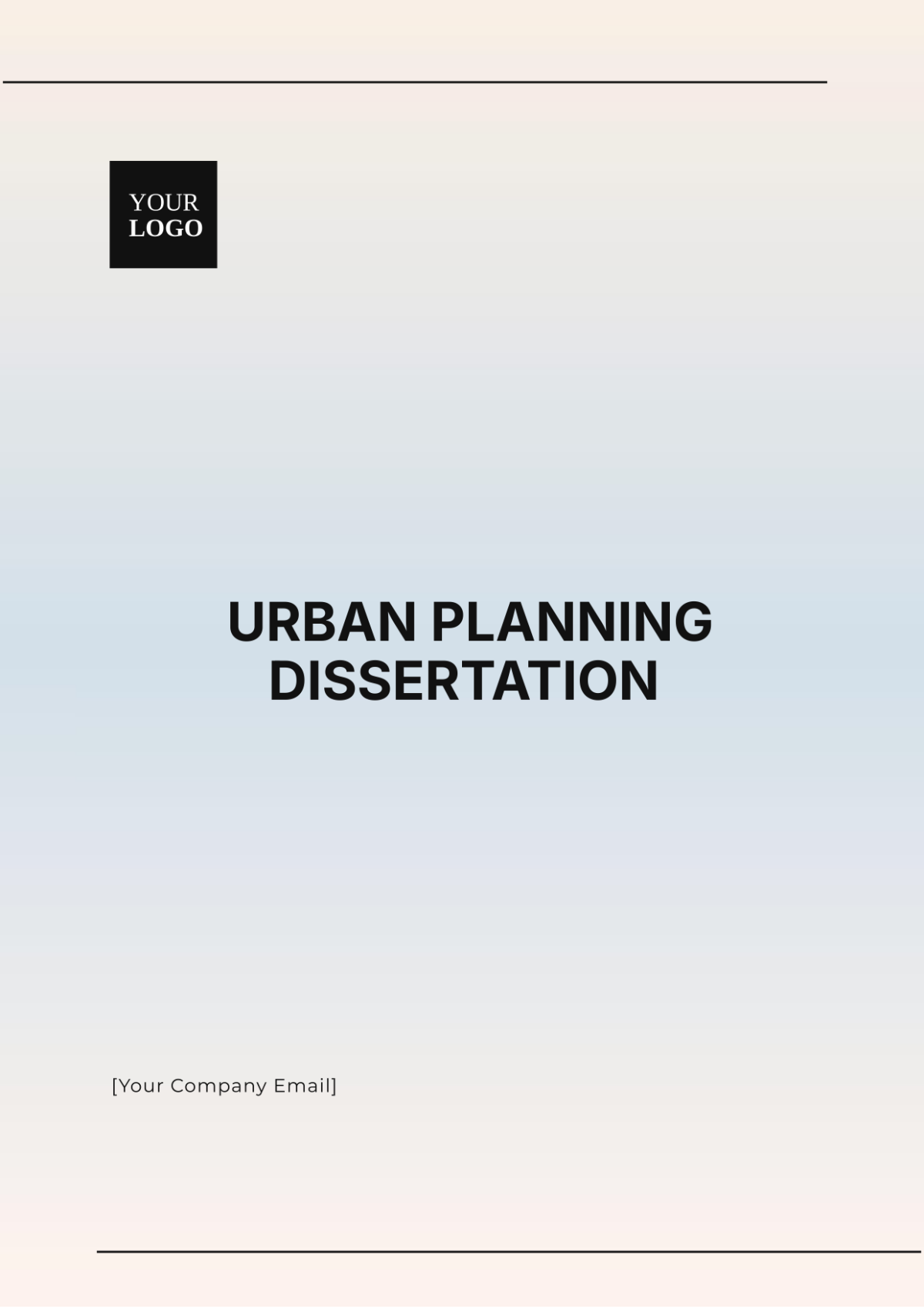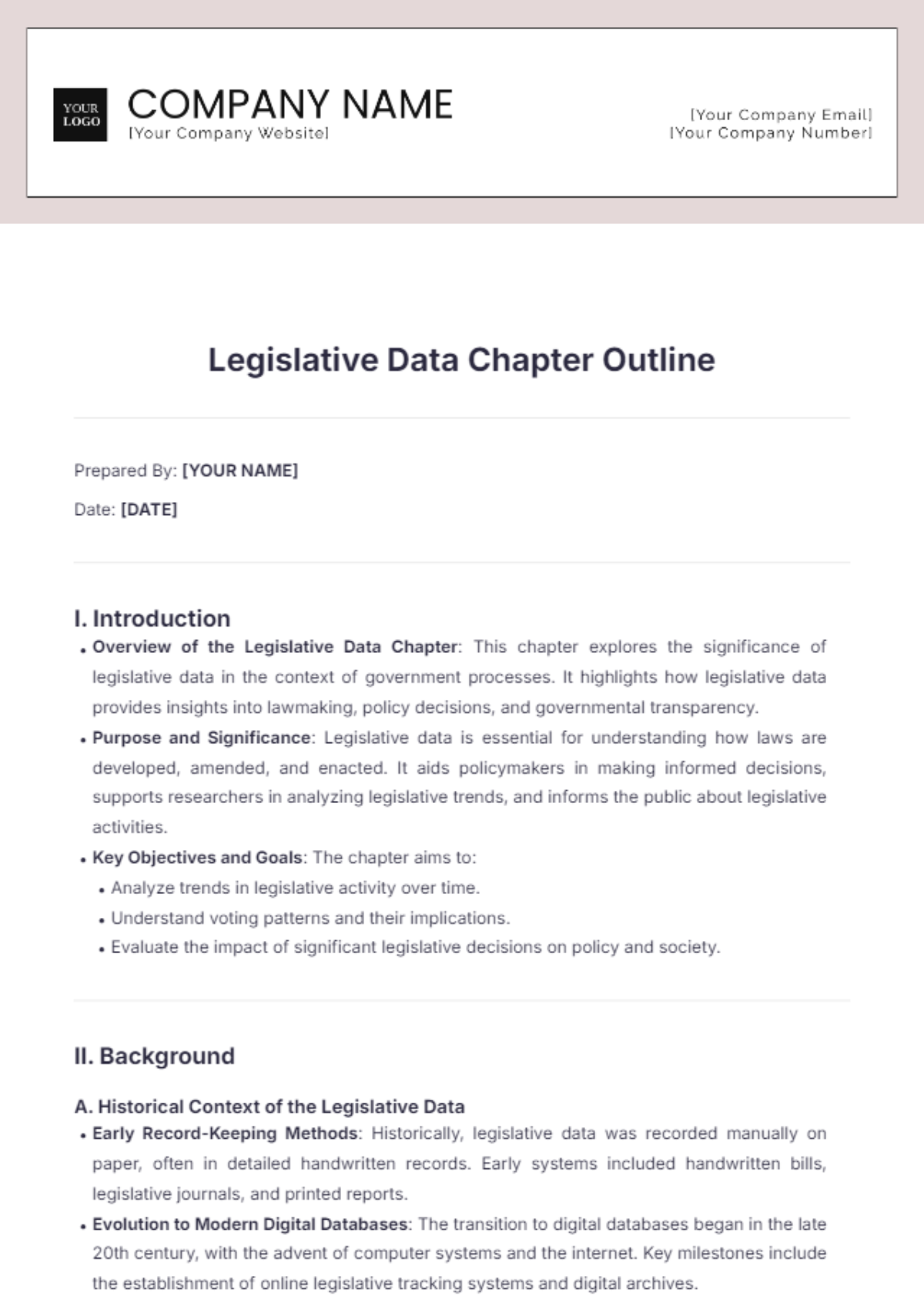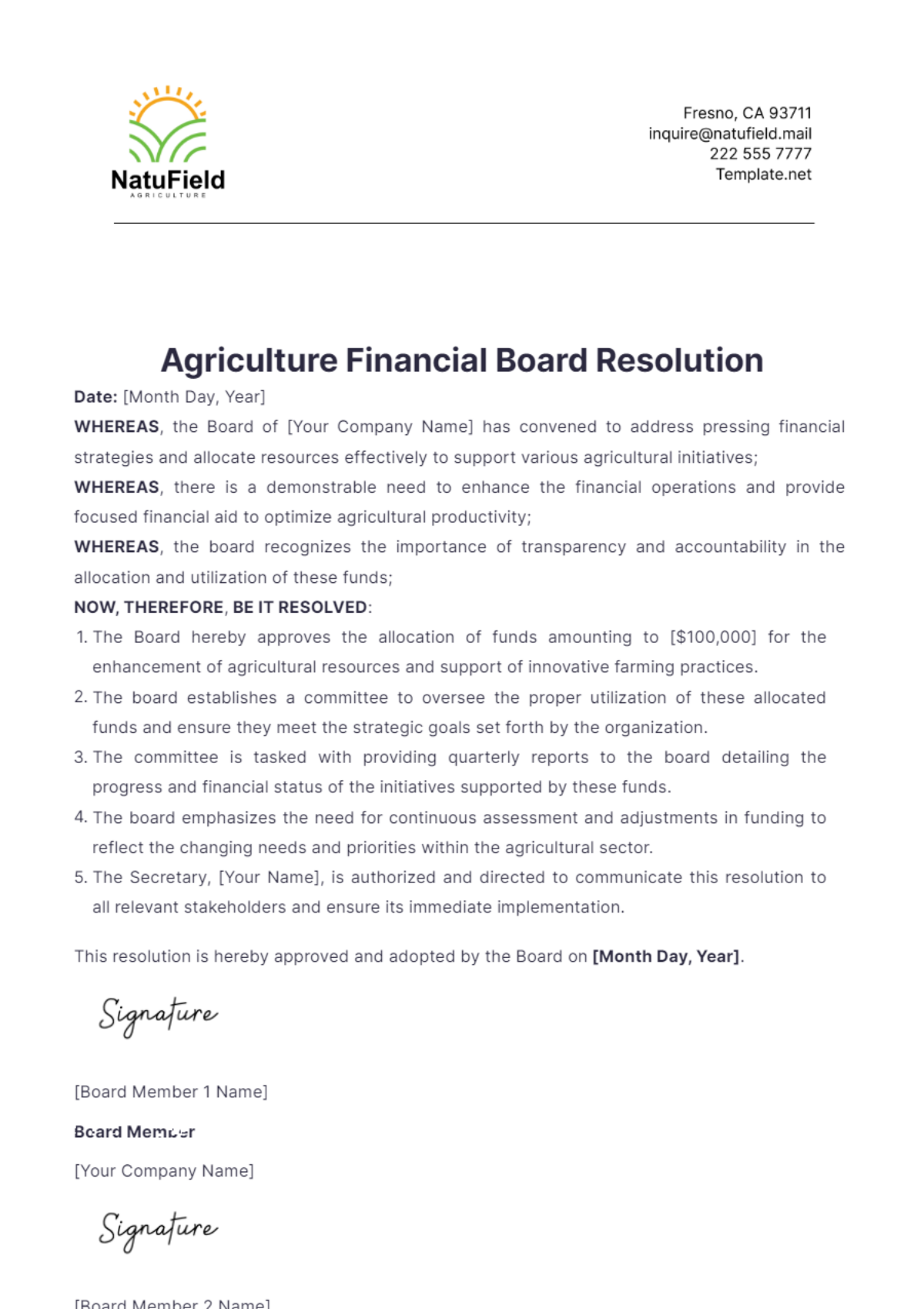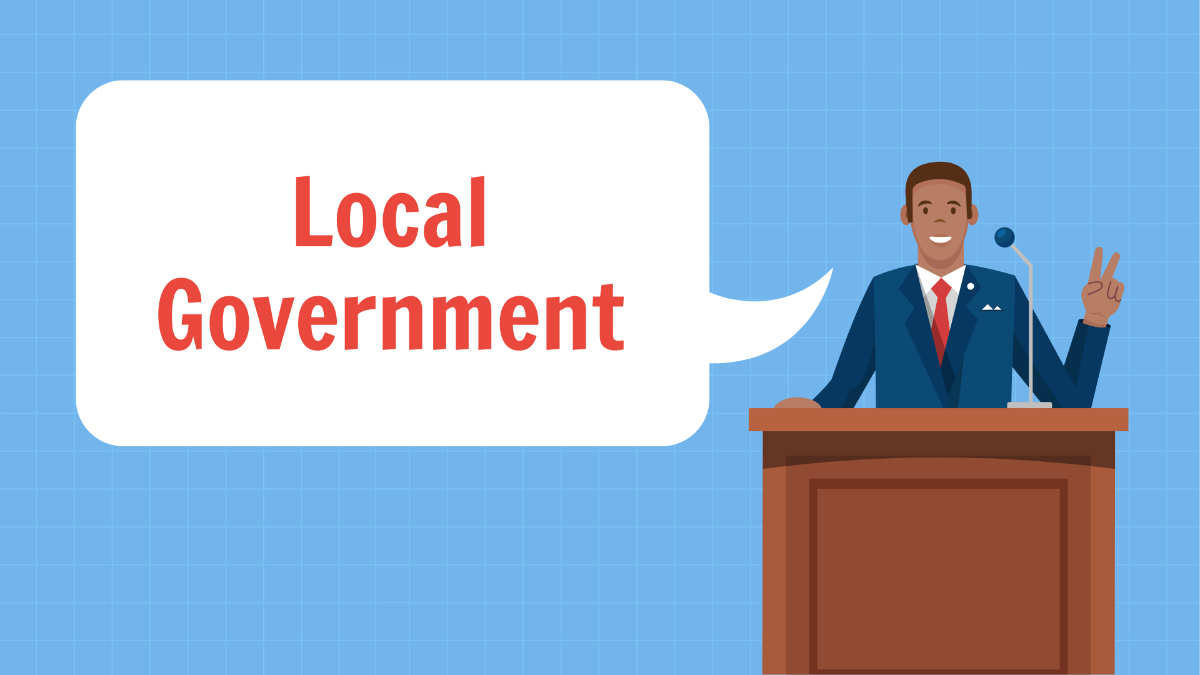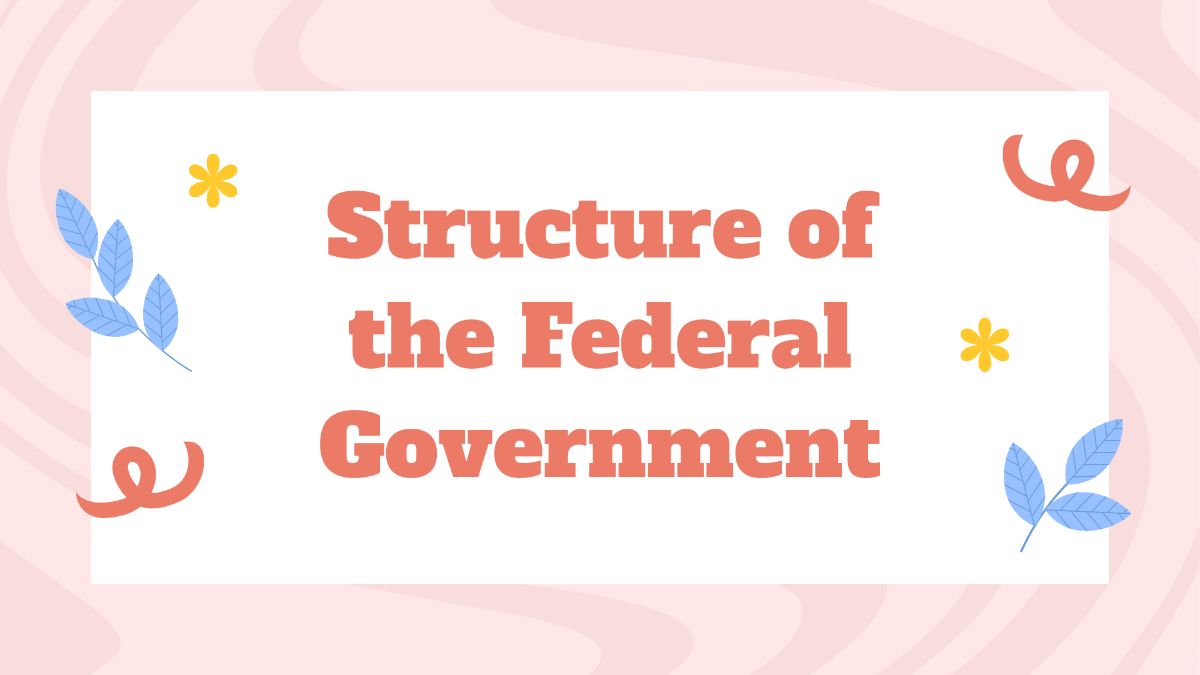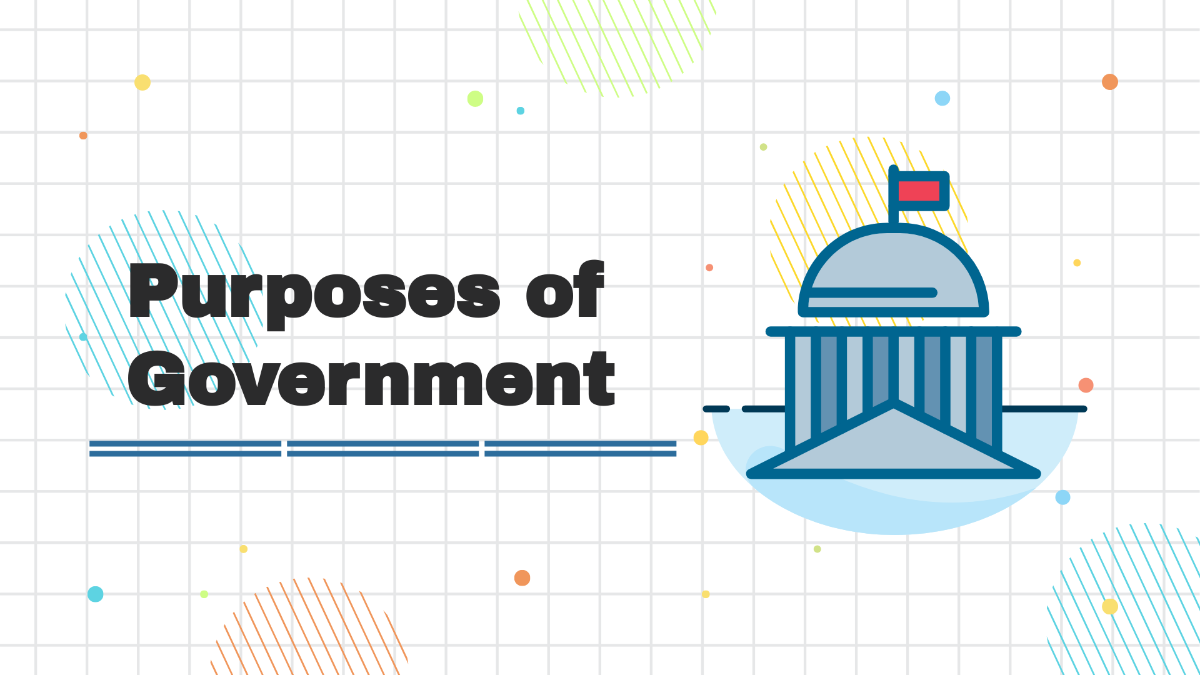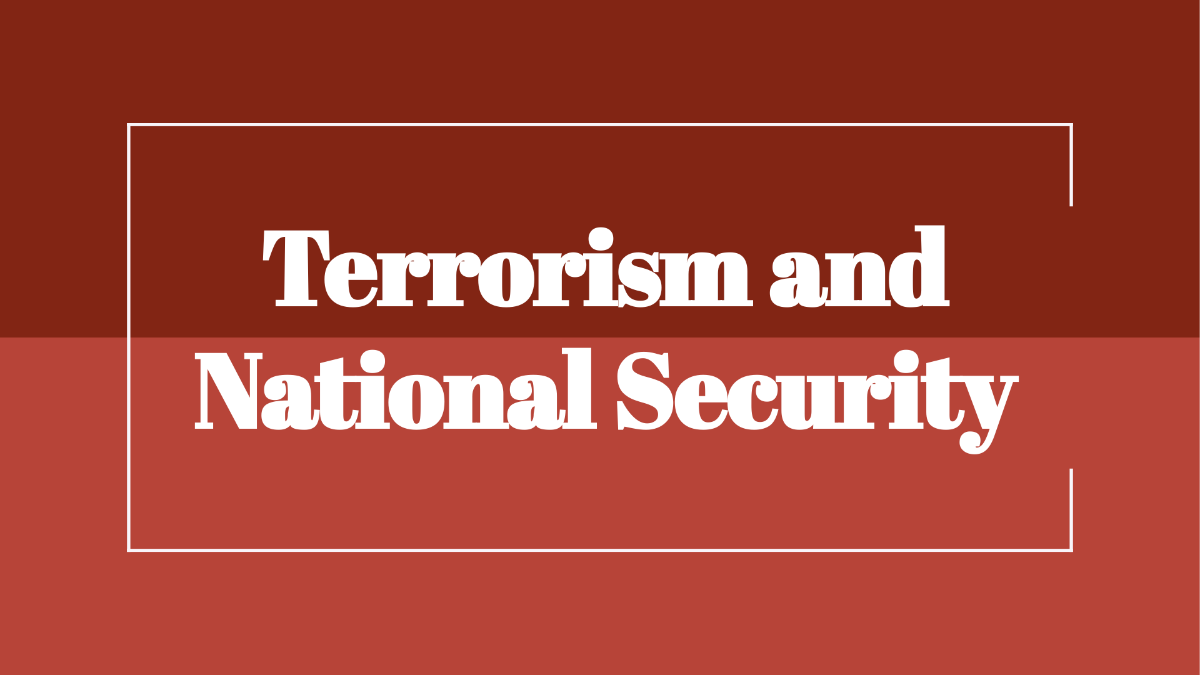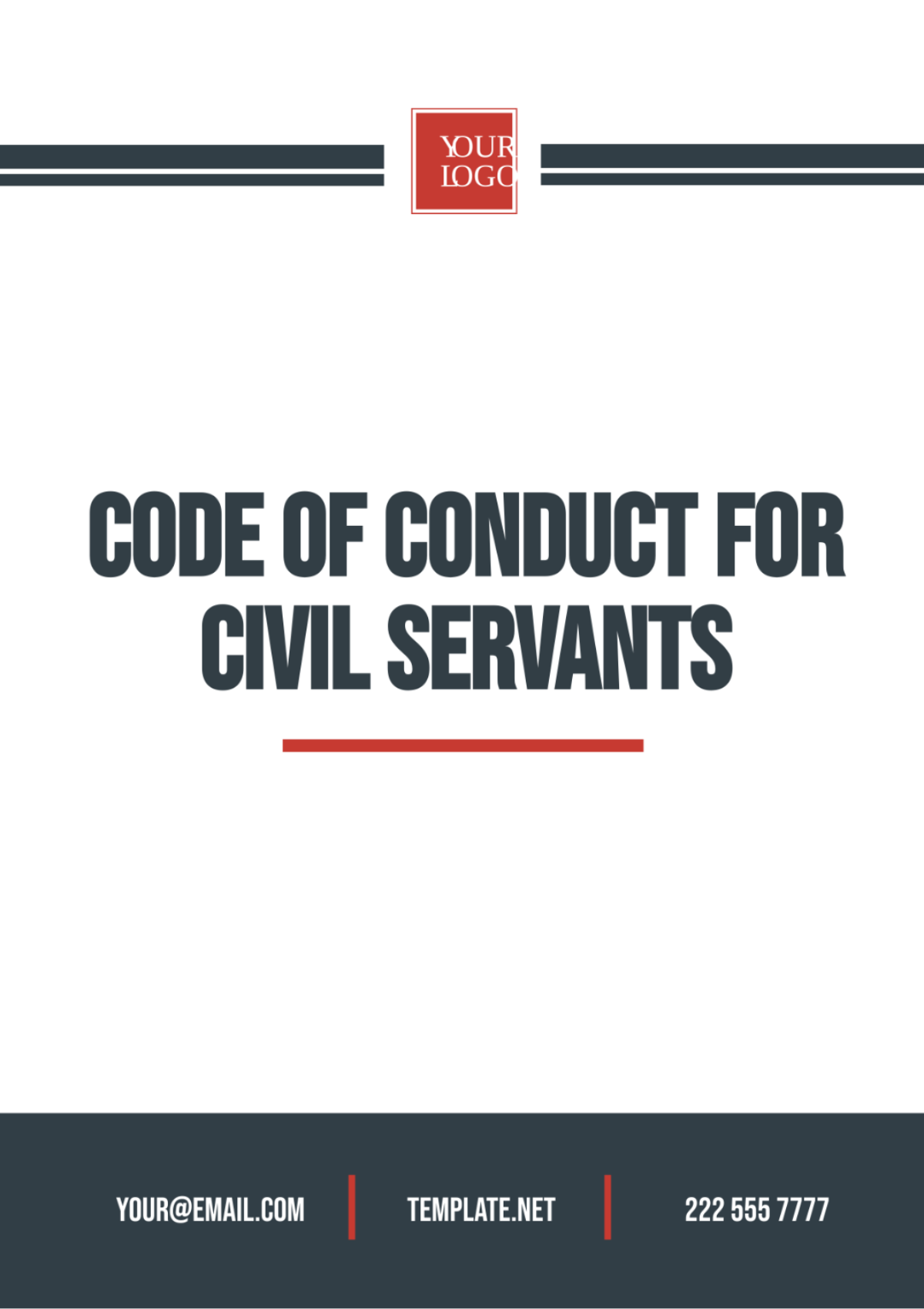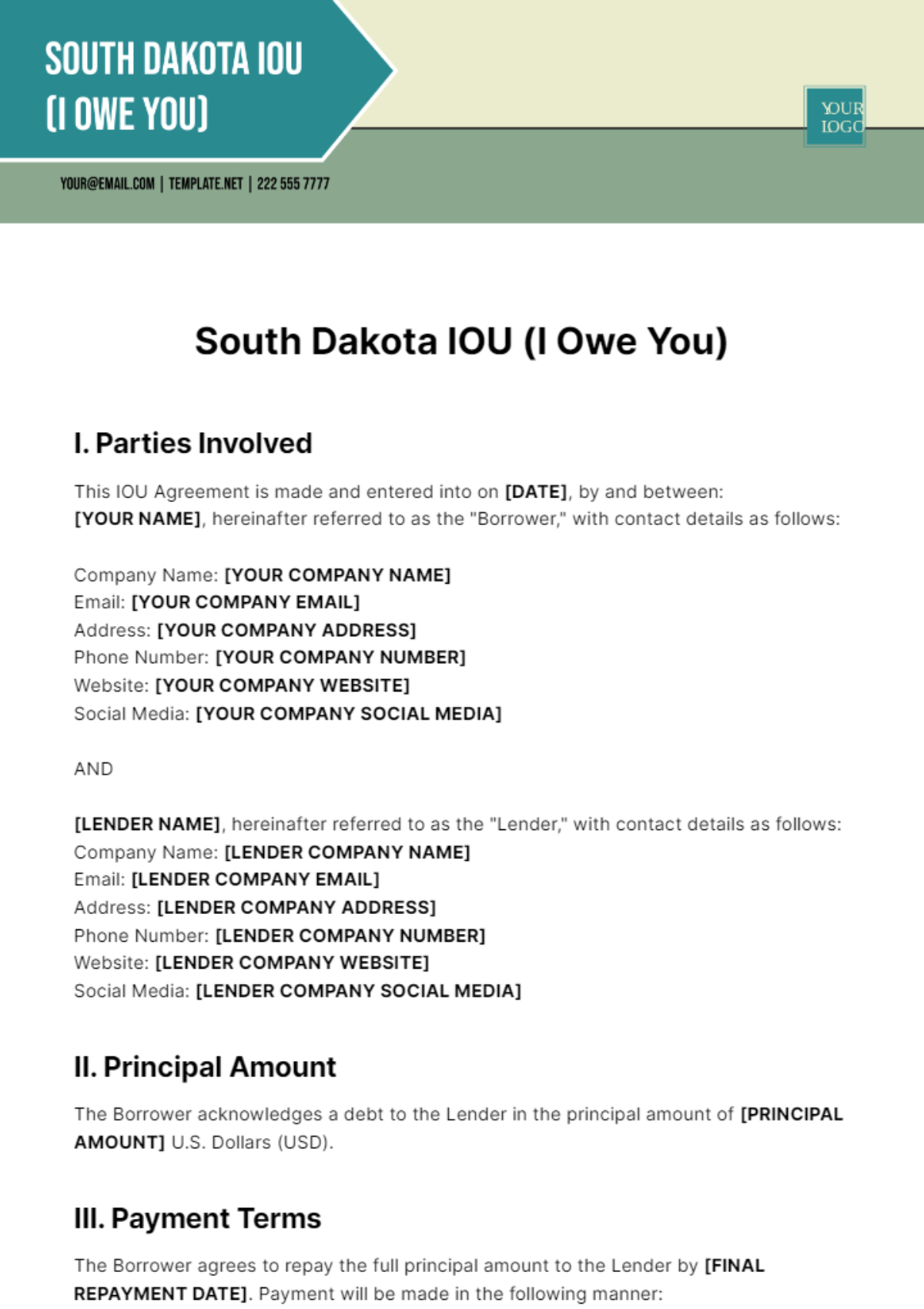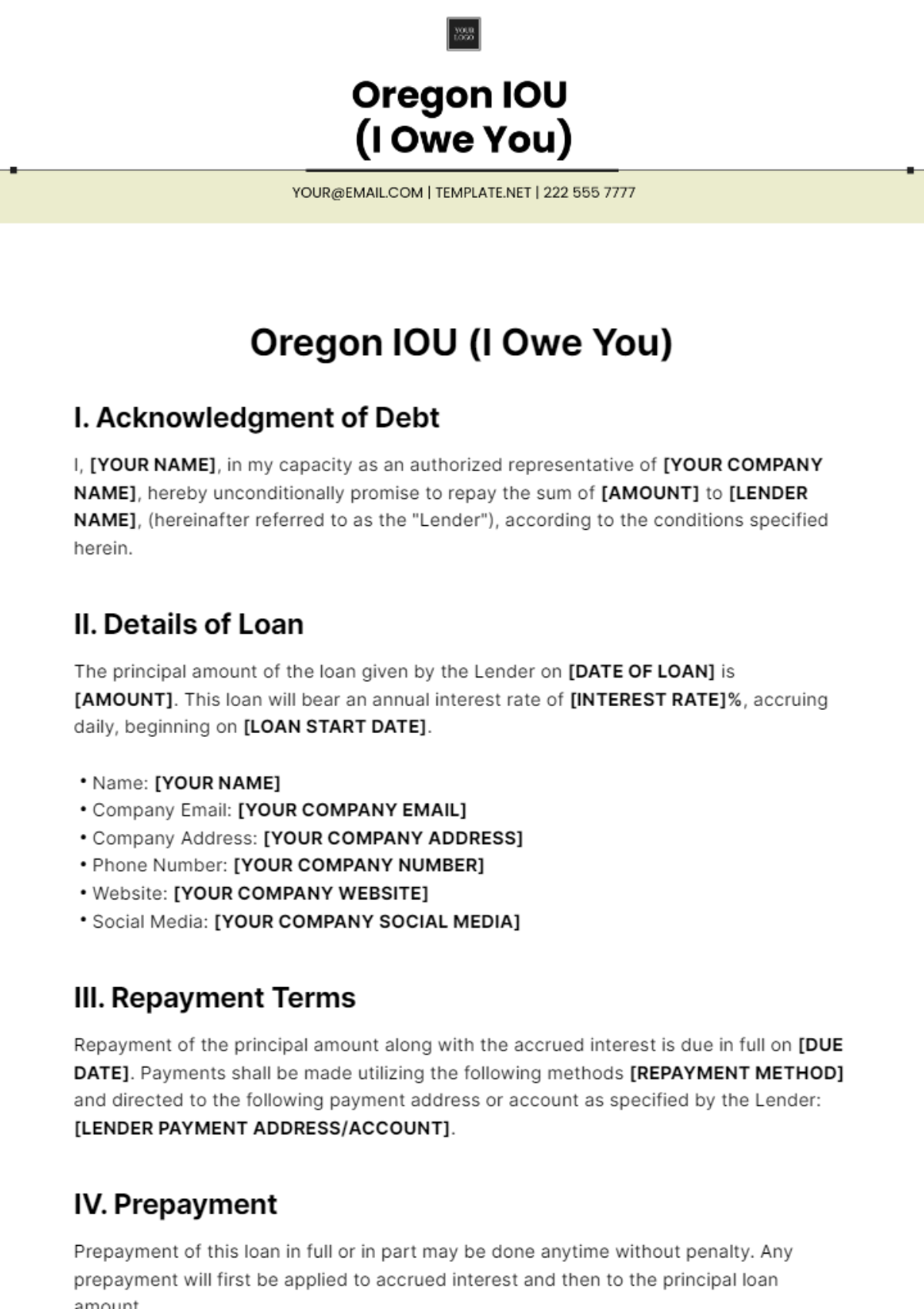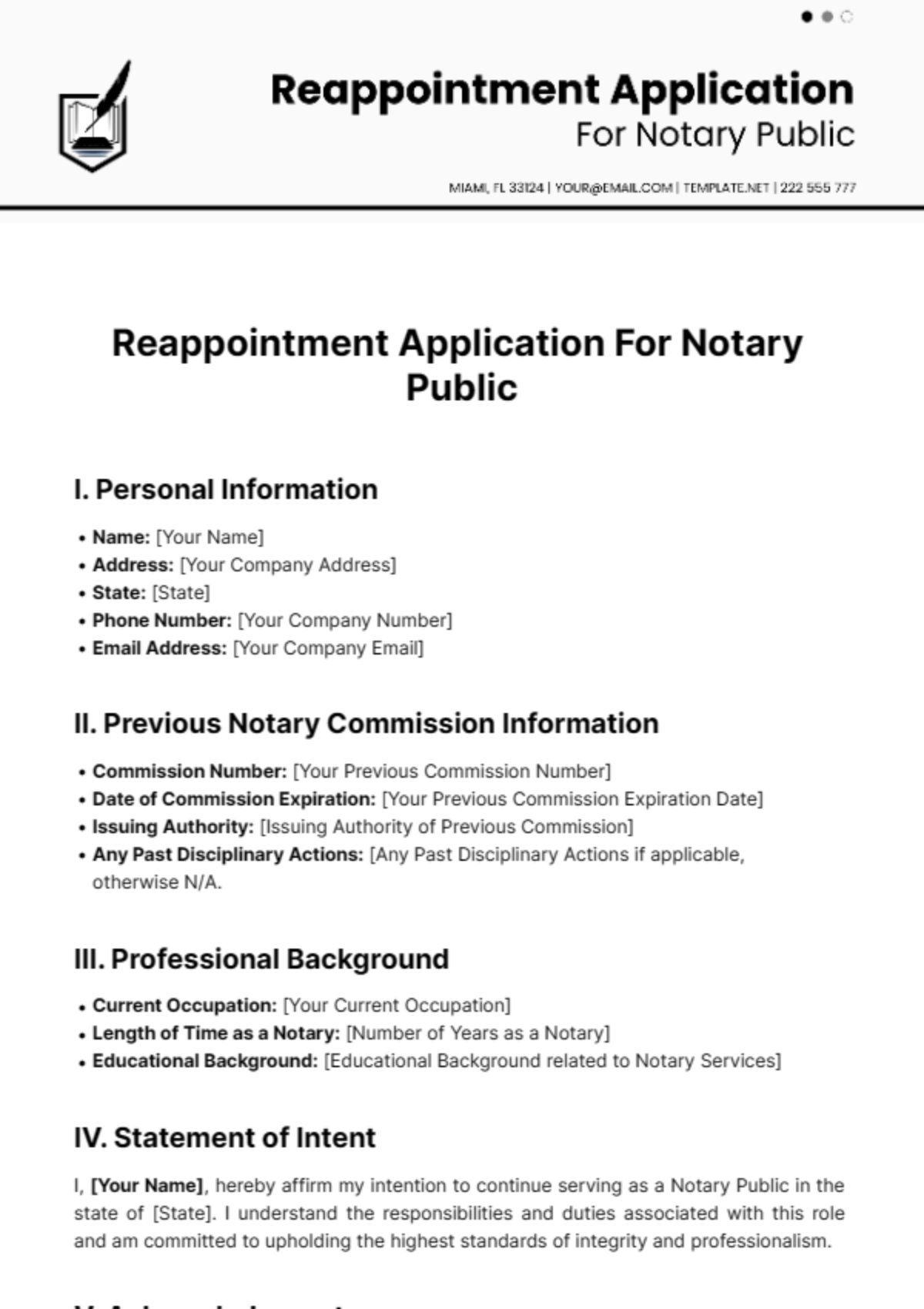Legislative Process Protocol
Date: August 1, 2050
Prepared by: [Your Name]
Organization: [Your Organization Name]
1. Introduction
This Legislative Process Protocol outlines the standard procedures and guidelines to be followed during the drafting, reviewing, and enacting of legislation. It ensures transparency, efficiency, and consistency in the legislative process.
2. Purpose
The purpose of this protocol is to provide a clear and structured approach to the legislative process, facilitating effective decision-making and promoting the rule of law.
3. Scope
This protocol applies to all members of the legislative body, including lawmakers, committee members, and supporting staff. It covers all stages of the legislative process from proposal to enactment.
4. Legislative Process Stages
4.1 Proposal Submission
Who can submit: Any member of the legislative body or authorized external entities.
Requirements: Proposals must be submitted in writing, including a detailed explanation of the purpose, scope, and expected impact.
Submission format: Use the designated legislative proposal form [Form Reference].
Deadline: Proposals must be submitted no later than [X days] before the start of the legislative session.
4.2 Committee Review
Committee assignment: The proposal is assigned to the relevant committee(s) based on subject matter.
Initial review: The committee conducts an initial review to determine the proposal’s feasibility.
Public hearings: If necessary, public hearings are scheduled to gather input from stakeholders.
Amendments: Committees may propose amendments to the original proposal.
Vote: The committee votes on whether to forward the proposal to the full legislative body.
4.3 Full Legislative Review
Introduction: The proposal is introduced to the full legislative body.
Debate: Members debate the merits and drawbacks of the proposal.
Further amendments: Members may propose further amendments during the debate.
Voting: A vote is taken to determine whether the proposal moves to the next stage. A majority vote is required for approval.
4.4 Second Reading
Revisions: Any amendments from the full review are incorporated.
Committee report: The relevant committee presents a final report on the proposal.
Final debate: Members engage in a final debate on the proposal, focusing on revisions.
Final vote: The legislative body votes on whether to pass the proposal into law. A supermajority may be required for certain types of legislation.
4.5 Executive Approval
Submission: The passed legislation is submitted to the executive authority (e.g., Governor, President) for approval.
Options: The executive may sign the legislation into law, veto it, or return it with recommendations for revision.
Veto override: If the executive vetoes the legislation, the legislative body may attempt to override the veto with a supermajority vote.
4.6 Enactment
Publication: Once approved, the legislation is published in the official legislative record.
Effective date: The law takes effect on the date specified within the legislation.
Monitoring and enforcement: Relevant agencies are tasked with enforcing the new law.
5. Roles and Responsibilities
5.1 Legislative Members
Proposal drafting: Draft clear and concise proposals that align with legal standards.
Review and debate: Participate actively in the review and debate process.
Voting: Vote on proposals based on their merits and alignment with public interest.
5.2 Committees
Proposal assessment: Assess the feasibility and impact of proposals.
Public engagement: Facilitate public hearings and gather stakeholder input.
Reporting: Provide thorough reports and recommendations to the full legislative body.
5.3 Executive Authority
Review and sign-off: Review passed legislation and determine whether to sign, veto, or return it for revision.
Implementation oversight: Oversee the implementation of enacted laws.
5.4 Support Staff
Documentation: Ensure all legislative documents are accurately recorded and archived.
Coordination: Assist in scheduling meetings, public hearings, and maintaining communication among members.
6. Public Participation
Public hearings: The public may attend and participate in hearings on proposed legislation.
Written submissions: Stakeholders may submit written feedback during the committee review stage.
Transparency: All stages of the legislative process are to be conducted transparently, with records made available to the public.
7. Amendment of Protocol
Amendment process: Any member of the legislative body may propose amendments to this protocol.
Review and approval: Proposed amendments must be reviewed and approved by the legislative body following the same process as for other legislation.
8. Conclusion
This Legislative Process Protocol is intended to facilitate the orderly and effective development of laws. Adherence to these guidelines will ensure that the legislative process remains fair, transparent, and accountable to the public.


